Editor's note: The premises burned down in a fire in early September 2025. The restaurant is likely to reopen, possibly at another venue.
Endo at The Rotunda opened in April 2019, on the top floor of the Helios building in White City. The single wooden counter seats a dozen people, and has views out through picture windows over the city. Westfield shopping centre may not quite be The Mediterranean as a view, but on a clear sunny day it does its best. Endo Kazutoshi worked at Zuma prior to opening his own place, and now has a small but growing family of outlets, including Sumi and Kioku. The dining room recently underwent a minor refurbishment, with what was the bar now replaced by seating that is used at the dessert stage of the meal. The format is an omakase tasting menu, priced at £290 per person these days, plus 15% service.
The meal today began with the “business card” dish, with toasted nori seaweed folded around tuna. Two types of nori are used, one of them sourced from Tokyo Bay. The tuna itself came from a supplier called Mr Tanaka in Portugal, a fisherman who catches wild bluefin tuna as they migrate, but in a sustainable fashion. The tuna used in the dish is a blend of cuts, a mix of medium and fatty tuna (chutoro and otoro respectively), topped with high-quality N25 kaluga caviar. This was an excellent start to the meal, the richness of the fatty tuna balanced by the crisp nori texture and the salinity of the caviar (17/20).
Next was sushi of lean tuna (akami) from the same supplier, marinated with a soy sauce that is made from scratch by Endo. A Japanese mustard called jigarasi is used in place of wasabi, this mustard originating in Hokoriku in north-western Honshu. This was topped with a garnish of Cornish shallots and onions and a little freshly grated yuzu zest. This was particularly well judged, the spice from the mustard and the freshness of the yuzu working beautifully with the lovely tuna. The rice itself was excellent, served at the correct body temperature and seasoned with vinegar, holding its shape well (18/20).
This was followed by a seasonal pea and dashi soup called surinagashi, which means “ground and poured“. Courgette flowers were filled with scallops and white fish, including turbot, accompanied by French sugar snap peas and baby courgettes. The dish was finished with homemade wild garlic oil, made from this season’s harvest, and garnished with leeks and shiso leaves. The French peas had lovely flavour, and the garlic added a nice extra note (17/20).
Sea bream (madai) was from Kumamoto Prefecture in central Kyushu, prepared with the skin lightly blanched and left on. It was served with a traditional kimi oboro (crumbled egg yolk sauce) and irizake (cooked rice wine), an ancient Japanese seasoning made from sake and Japanese plum (ume). Sea bream is a staple in sushi meals, and I have had it many times in Japan. The texture here seemed just right; sometimes in Japan it can be served quite firm, sometimes disconcertingly so, at least to me. The garnishes worked well (17/20).
Cornish lobster was cooked in lobster oil, served with a sweet and tangy tosazu (a vinegar-based seasoning) dashi jelly. The lobster was accompanied by enoki mushrooms, Isle of Wight tomatoes, benitade (red water pepper), and pickled daikon. The dish was finished with cresses (from nearby Acton Town of all places) and Australian black truffles. This was a good dish, the truffles excellent, though there is only so much flavour that you can really get from Isle of Wight tomatoes. The lobster itself was tender (16/20). Tempura kakiage was a crispy tempura fritter of with cuttlefish from Brixham in Devon. This came with baby courgettes and sweet summer corn, served with chilled sencha tea from Yakushima. The tempura was not at the level of specialist tempura restaurants in Tokyo, but was better than I recall it here previously (16/20).
Irish oysters were marinated in tsume, a sweet and savory glaze made using soy sauce passed down from the chef who trained Endo in Japan. This was finished with a touch of yuzu zest for fragrance. This was served as sushi, passed from the chef’s hand to the diner’s. The touch of yuzu zest was a useful touch, and gave some balance to the salinity of the oyster (16/20). Scallops from the Orkney Islands were lightly topped with zest of sudachi, a citrus fruit from Tokushima that tastes like a cross between lime and grapefruit. This was served with Kaluga caviar and sea salt, which nicely complemented the natural sweetness of the scallops (17/20).
Next was pigeon from the Brittany Peninsula marinated in shio-koji and smoked with Yamada Nishiki sake rice. This came with a purée of yam and lily bulb, samphire and Roscoff onions cooked in onion tare sauce. These elements were accompanied by a pigeon consommé scented with shiso leaves. This was a terrific dish, the pigeon having superb flavour and the Roscoff onions being beautifully sweet (18/20). This was followed by sushi of chutoro (semi-fatty tuna) marinated Edomae-style with a house blend soy sauce and yuzu zest. The tuna was again of a high standard (17/20). Shimaaji (striped jack) from Kumamoto Prefecture was cured with salt and lightly smoked with hay. It was finished with sweet soy sauce and a touch of salt. The fish had excellent flavour, and it was carefully seasoned (17/20).
Next was aburi otoro (seared fatty tuna). The tuna was pan-seared and then cherry-wood smoked. It was served with an onsen egg sauce made using eggs from Gloucestershire, paired with enoki and cordyceps mushrooms. This was topped with crispy kale chips fried in koji oil, black Australian truffles, cress from Acton Town, and Kujo spring onions from Kyoto. This was an unusual and successful dish, the richness of the egg yolk balanced by the onions and lifted by the fragrance of the truffle (17/20).
Sea trout was salt-cured and marinated in soy sauce, then smoked using Yamada Nishiki sake lees. This was topped with “negisho”—a blend of chopped chives and ginger juice. This trout, caught off the coast of Hampshire, was certainly better than the tasteless chalk stream trout that currently infests London restaurants (16/20). Langoustines were gently poached in Taihaku sesame oil, with langoustine brain paste and salt. The langoustine tail was then placed on the usual shari rice base for the sushi (17/20).
Traditional Goto-style thin udon noodles were sourced from Nagasaki. These were served in a dashi made from Devon spider crab. This was topped with chargrilled oyster mushrooms seasoned with Japanese mustard, Kujo green onions and nori oil. The noodles had very good texture, and I liked the green onions (16/20).
Cornish sea bass was cured in salt and vinegar, served on a base of shari rice blended with katsuobushi, kinome leaves and sesame seeds. This was topped with tsukudani, shiraita kombu, shiso, and a house-blend nori. This was another very good sushi dish, the sea bass having lovely flavour (17/20). Binchotan-seared otoro had otoro tuna that had been lightly seared over binchotan white oak charcoal. This was topped with yuzukosho condiment, oysters from Ireland, and sudachi citrus juice. The citrus balanced the richness of the fatty tuna nicely, the high-quality binchotan oak not imparting much charcoal flavour and allowing the ingredients to speak for themselves (17/20).
The final savoury course was Japanese beef i.e. wagyu. This particular one was A5-grade strip loin from Himawari-breed Wagyu in Miyazaki Prefecture. It was finished with negi (scallion) and yakiniku sauces. It was served with a Cornish potato mousse, organic shio kombu, French green beans, crispy Cornish potatoes fried in wagyu fat, and white asparagus from the Loire Valley in France. Miyakazi beef is one of the highest rated in Japan and this was very tender, the white asparagus right at the end of its season, but a nice earthy balance to the beef (18/20).
For dessert, you leave the counter and move to a nearby seating area. We had a soufflé made using homemade rice koji and sakekasu (sake lees) from Cambridge. This was brushed with a little Château d’Yquem wine and sprinkled with Okinawan Awayuki sea salt. The souffle was accompanied by an apple and pear compote simmered in rum and a Darjeeling tea syrup. The souffle had risen well and was evenly cooked, the compote a pleasant accompaniment (16/20).
Service was charming throughout the meal, and the bill came to £512 for the tasting menu plus the sake pairing at £150 each, plus service. This is, of course, a great deal of money, but the food is excellent and the overall experience very enjoyable. One thing that was noticeable is that the non-sushi dishes have improved here. At one time, the sushi dishes were always lovely but the other dishes quite variable, almost fillers between the sushi highlights. The gap in standard here between sushi and non-sushi has now almost disappeared, with dishes like the pigeon being genuinely classy.
Further reviews: 12th Sep 2023 | 13th May 2023 | 22nd Mar 2023 | 26th Nov 2022 | 11th Jun 2021 | 20th Nov 2019 | 24th Jul 2019














































































































































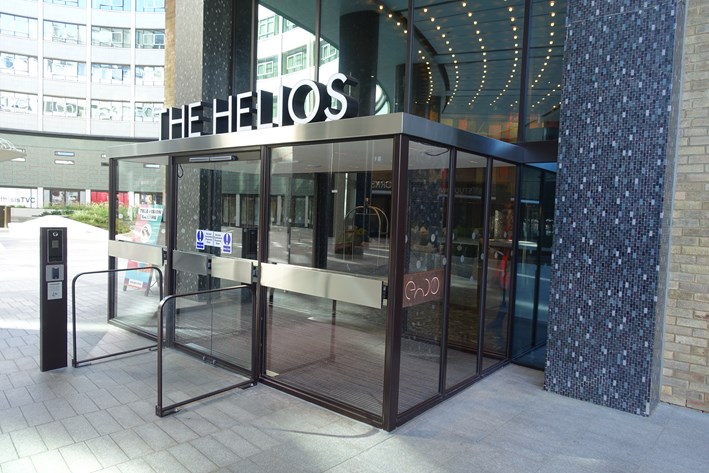

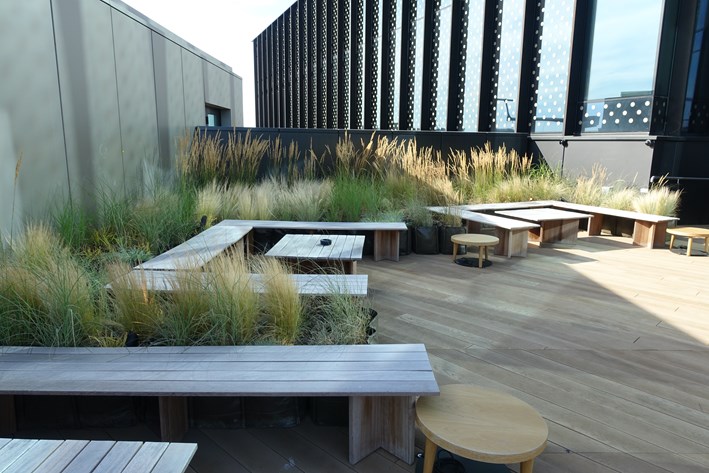
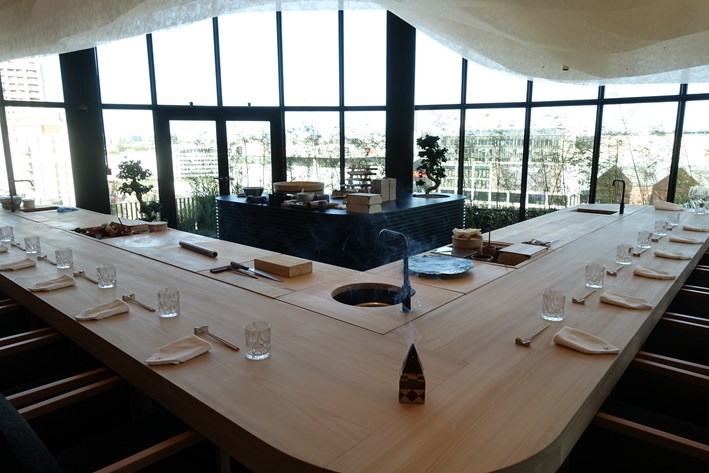
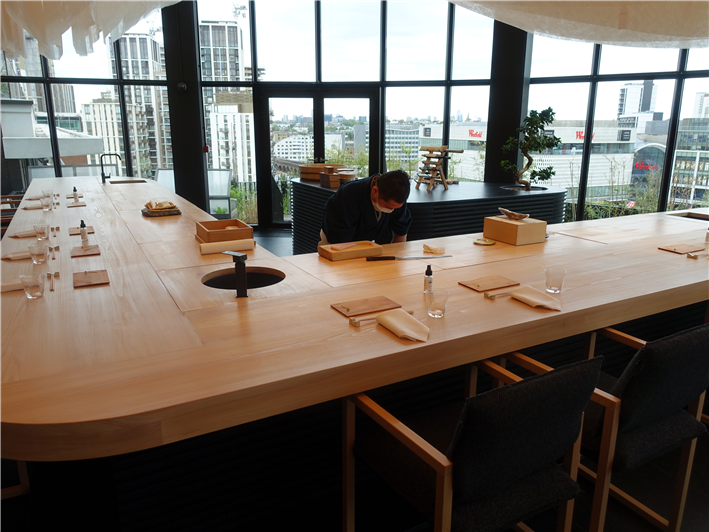
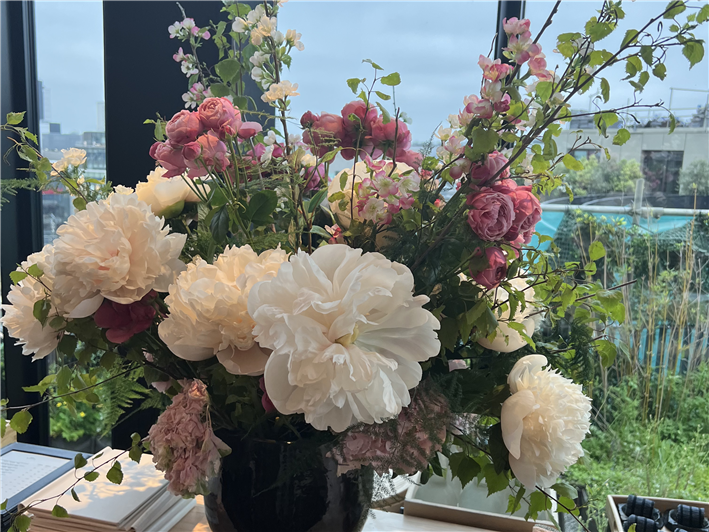
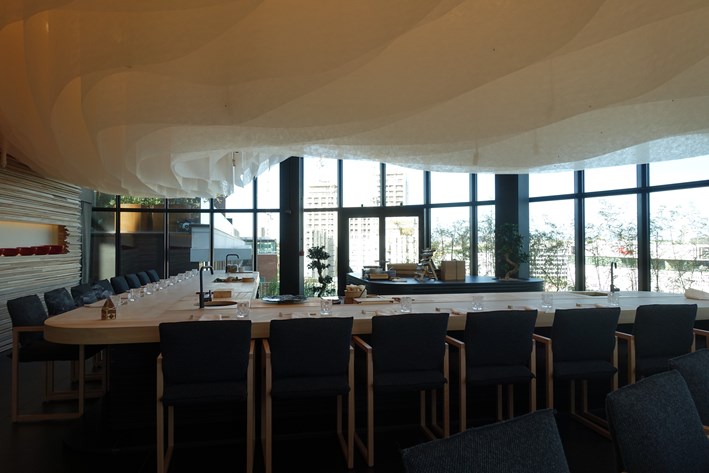
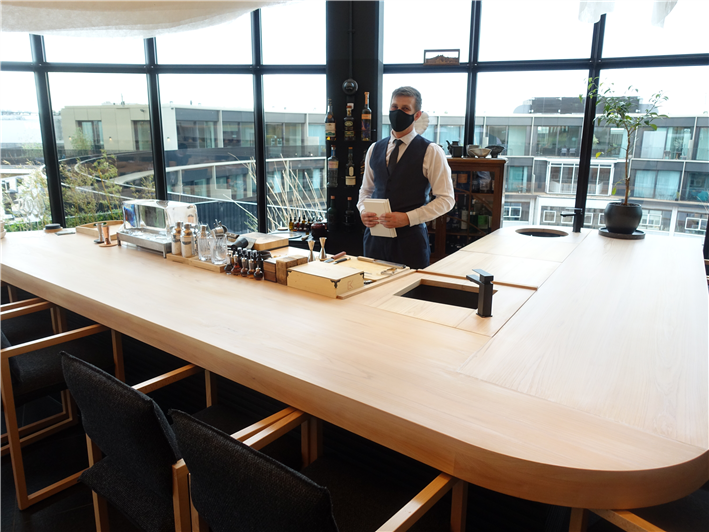
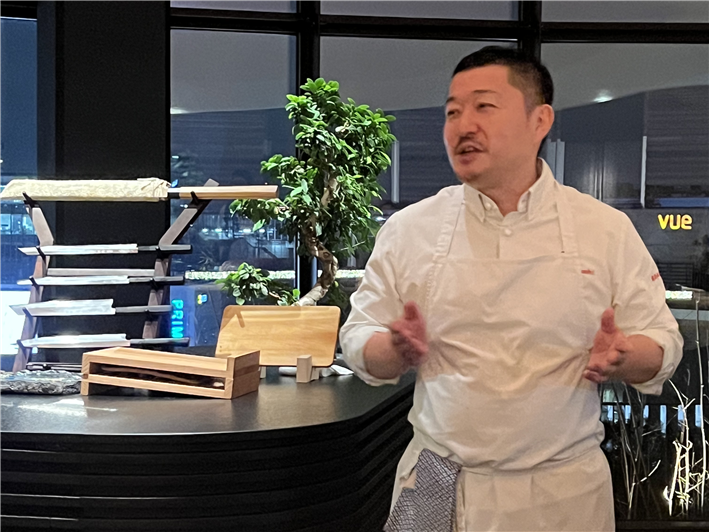
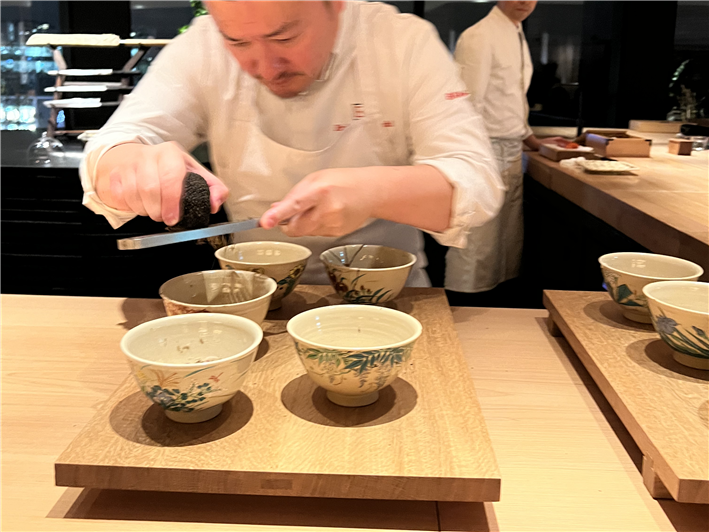
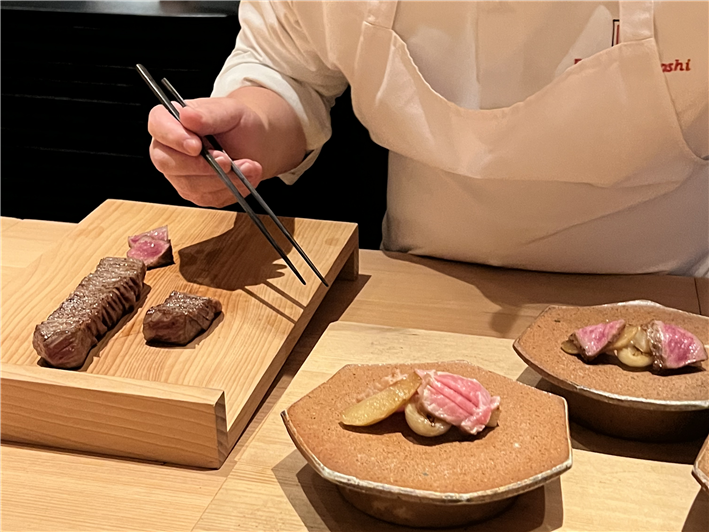
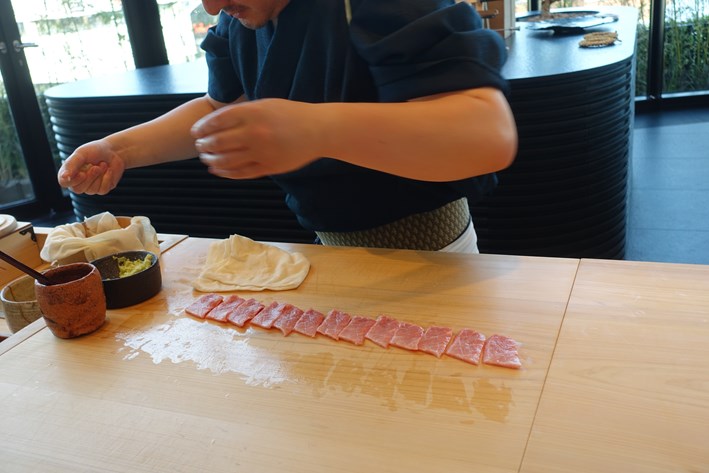
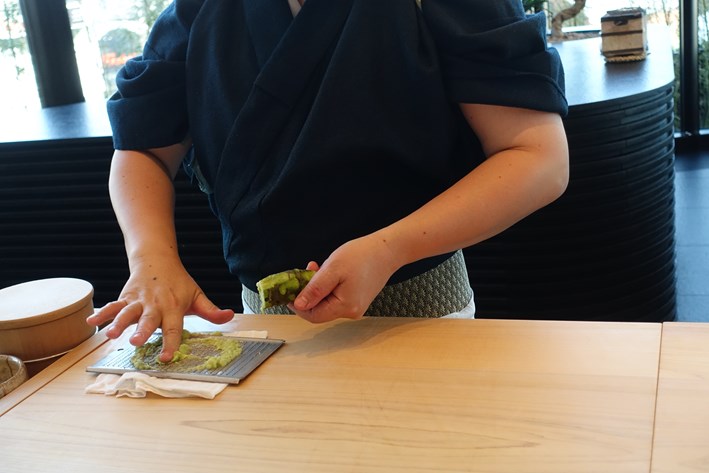
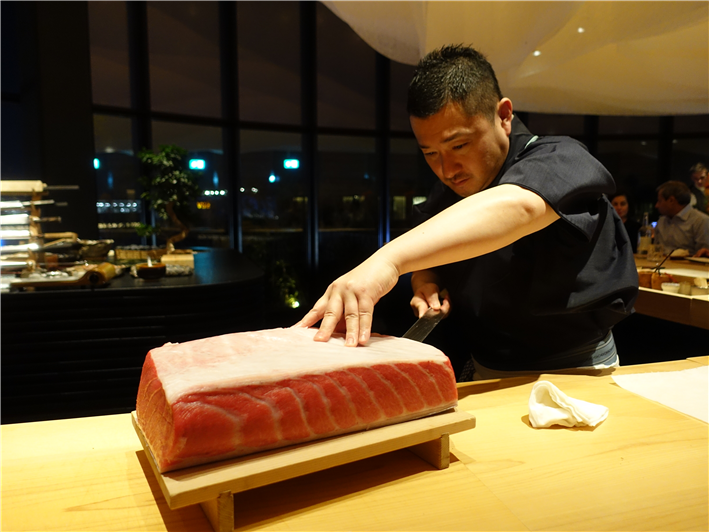
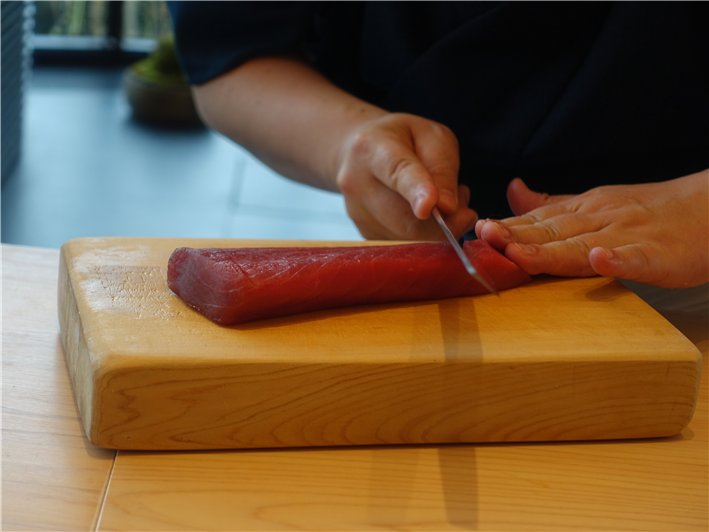
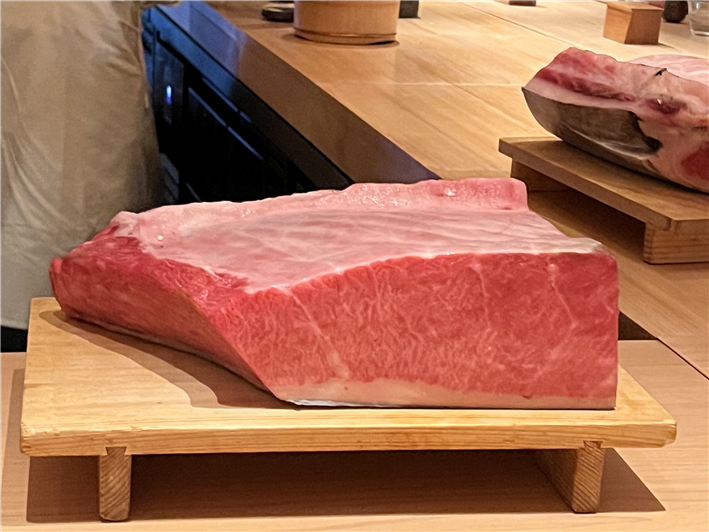
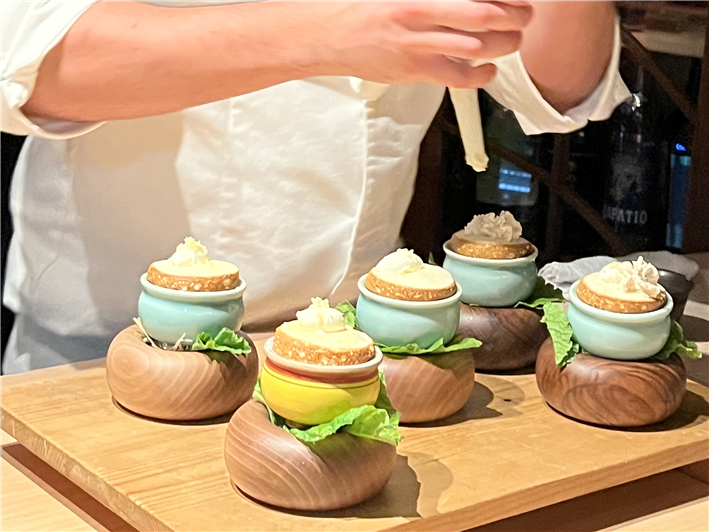

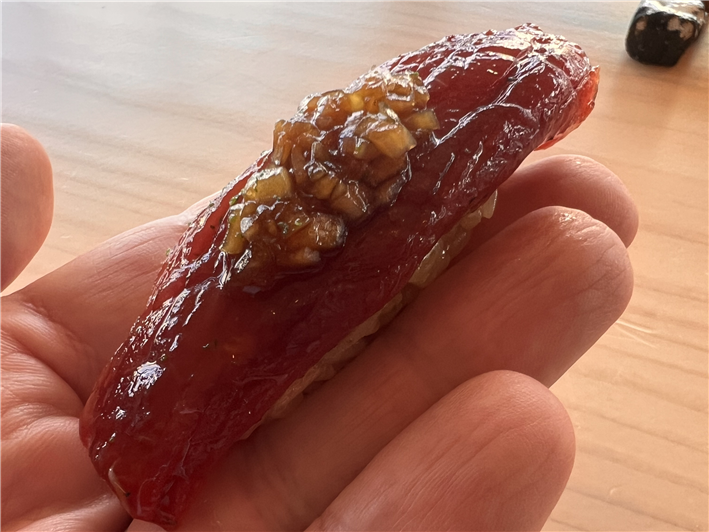
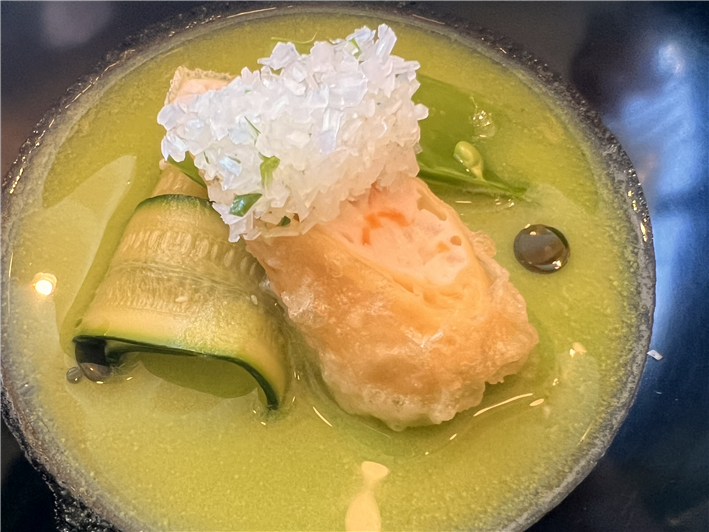
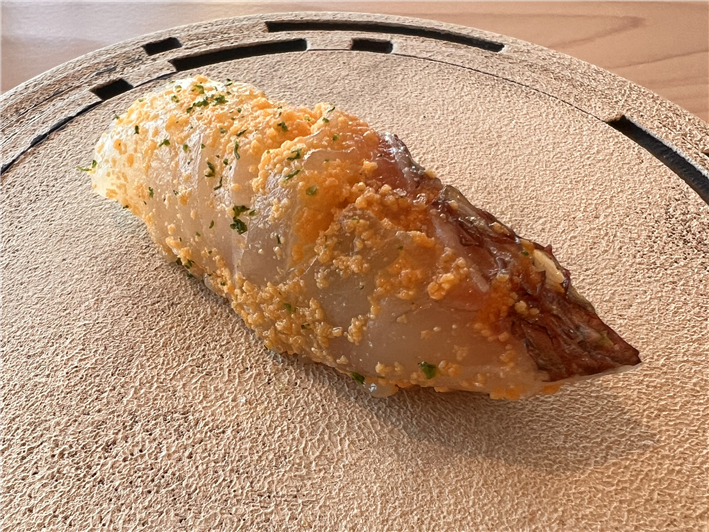
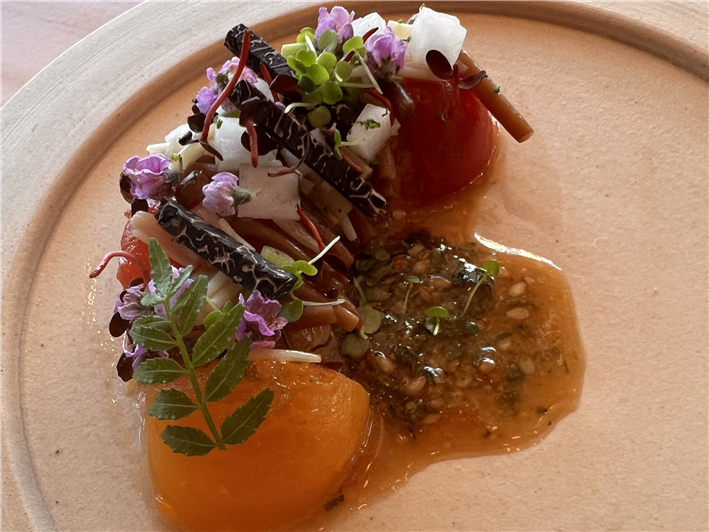
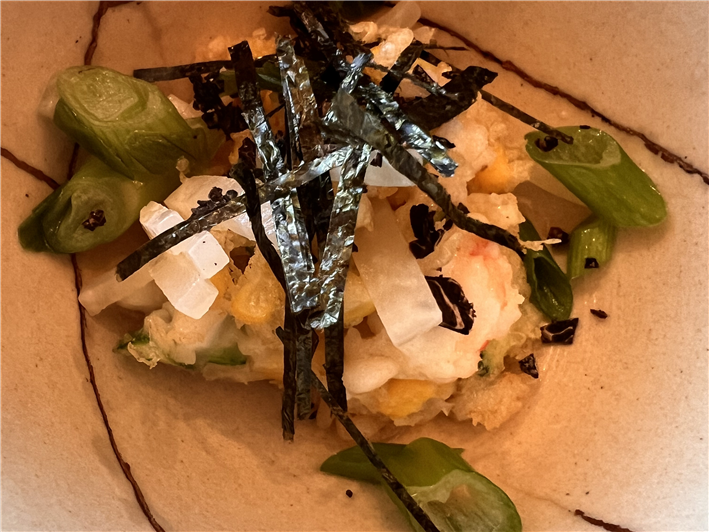
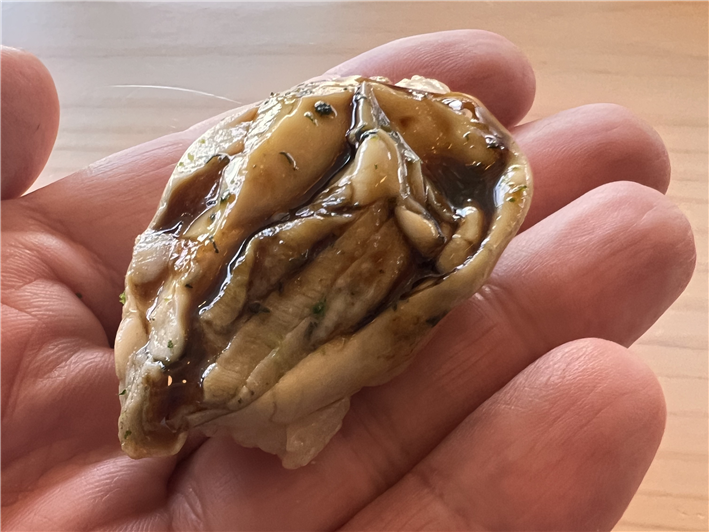
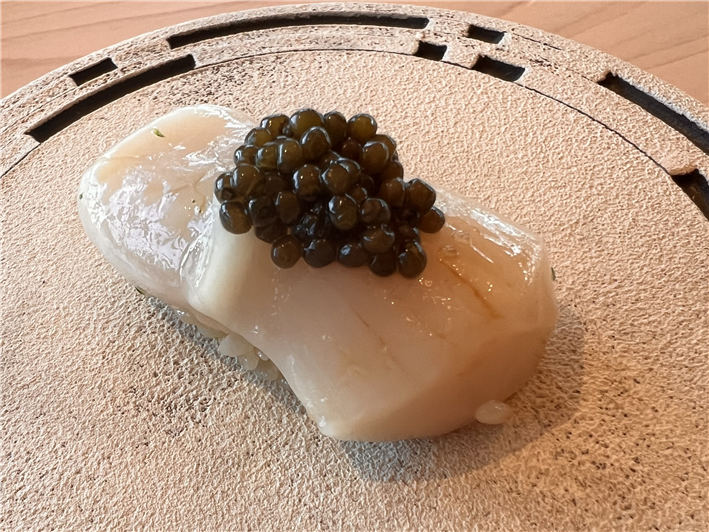
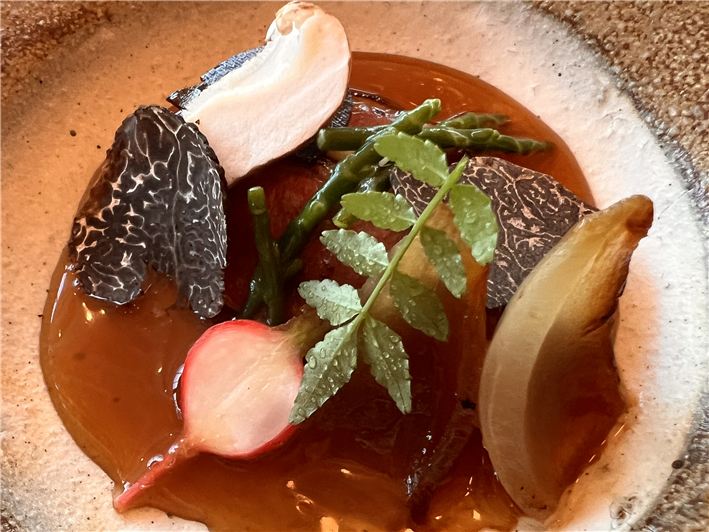
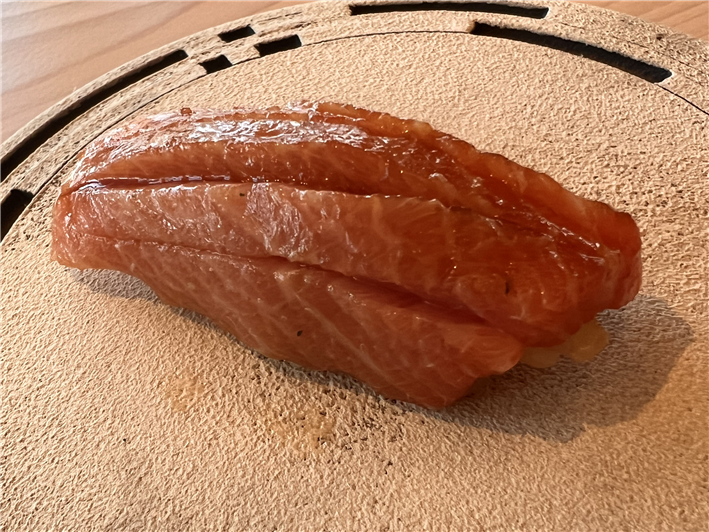
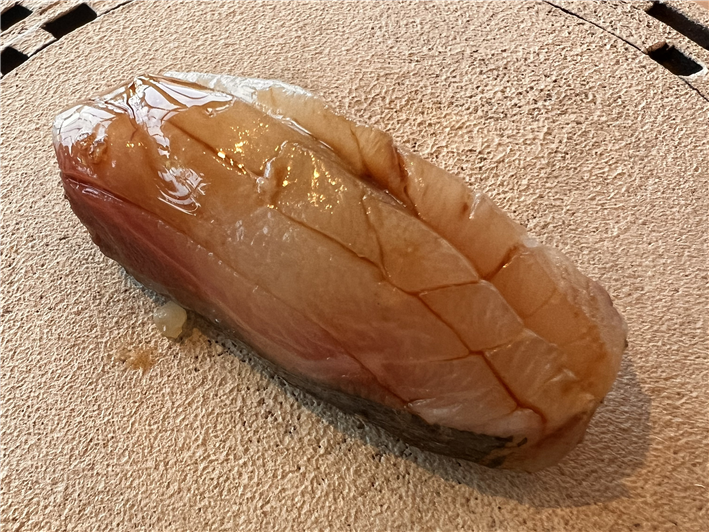
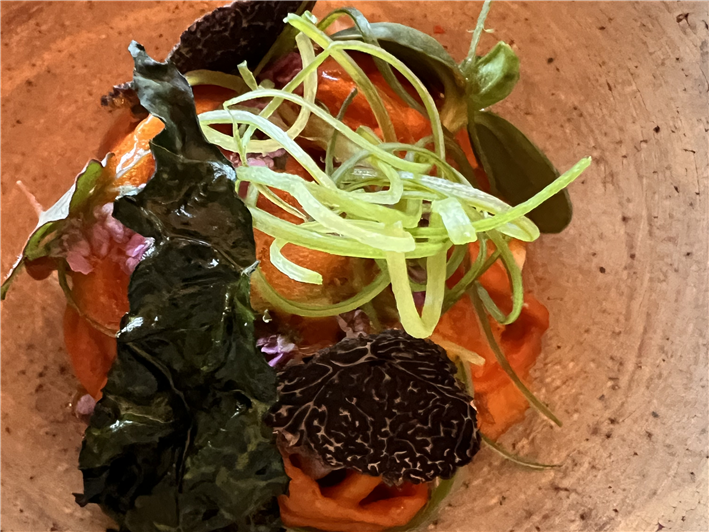
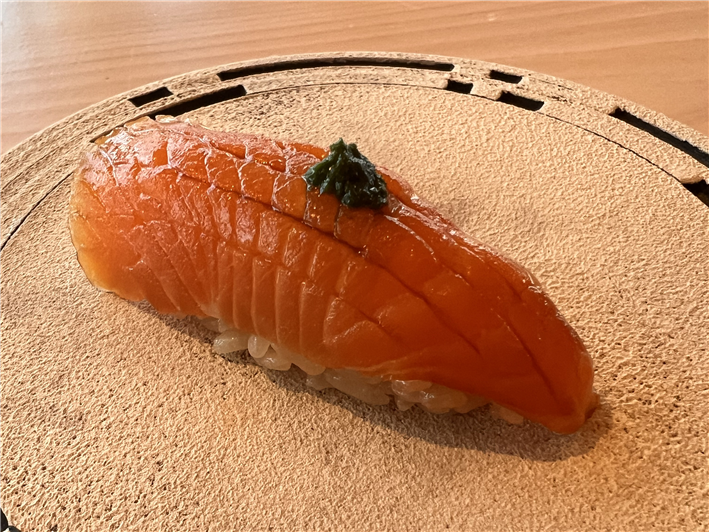
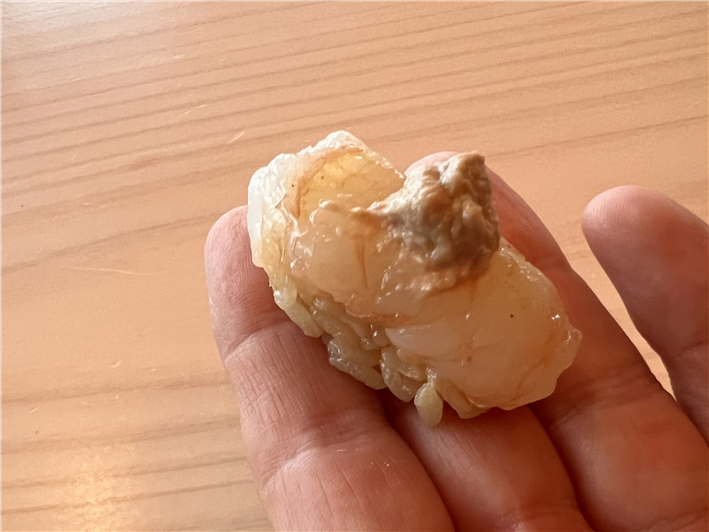
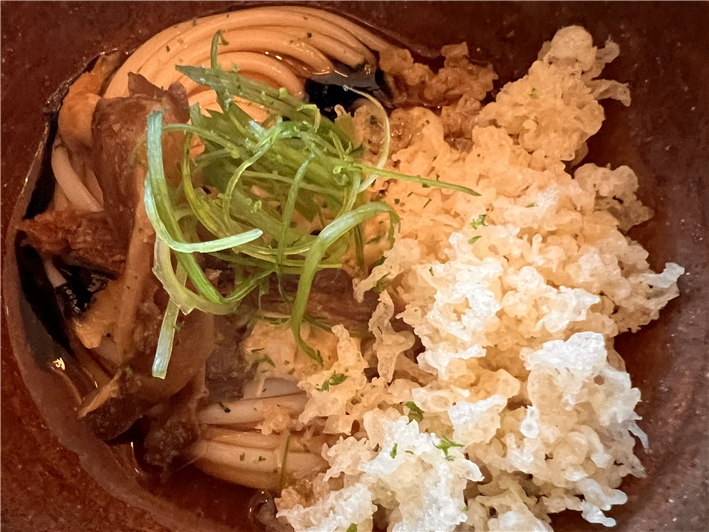
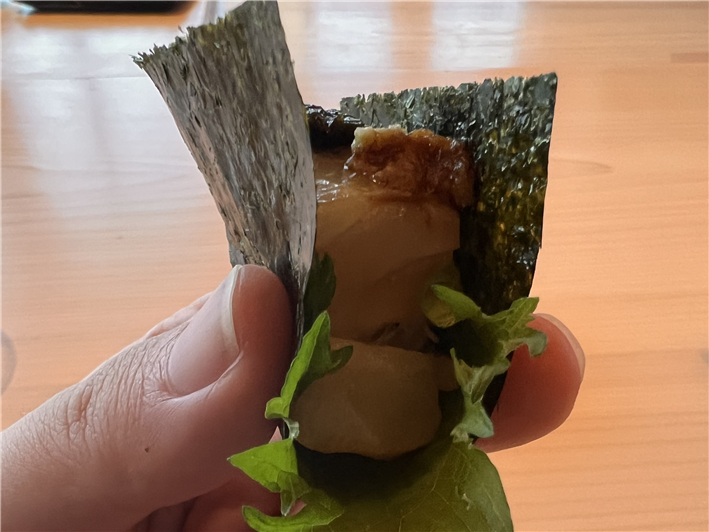
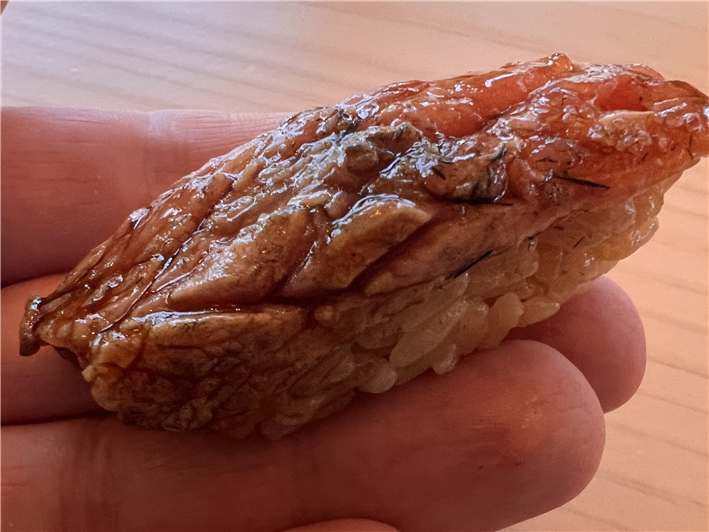
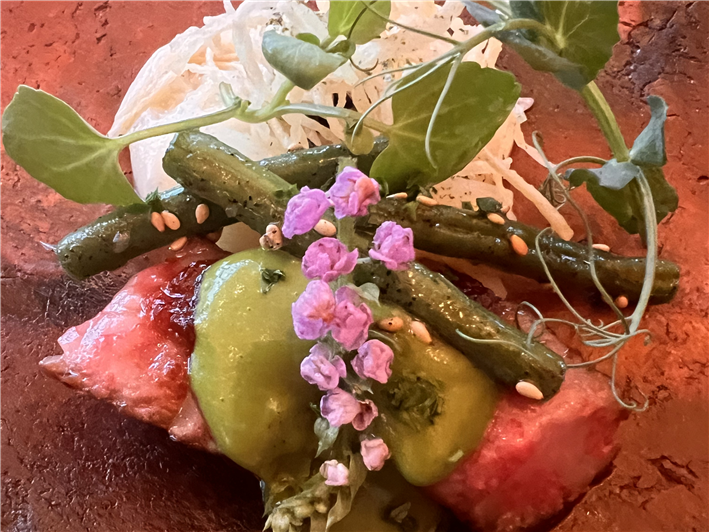
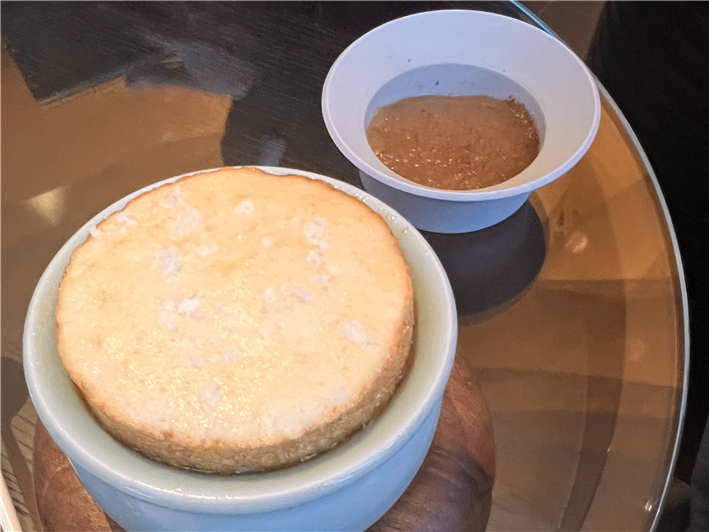
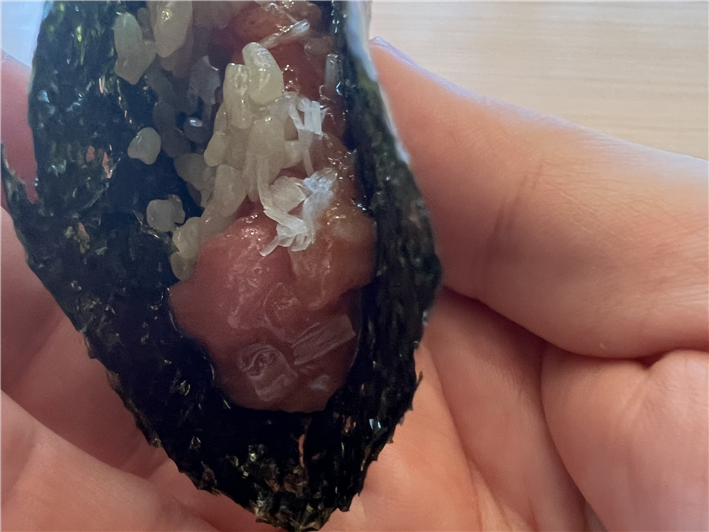
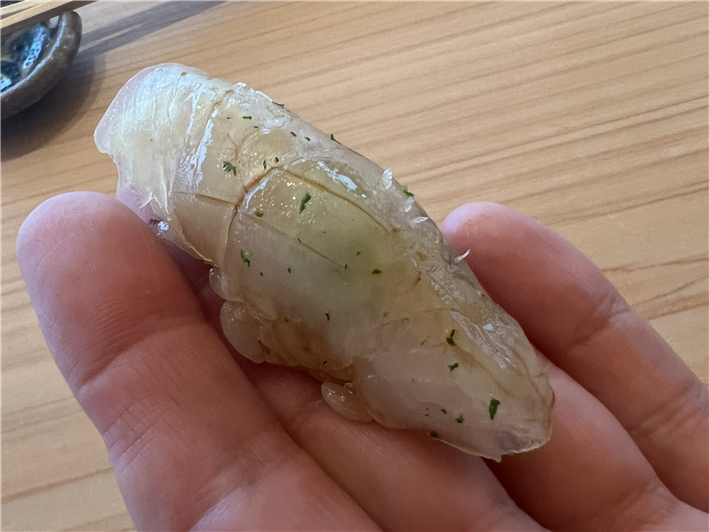
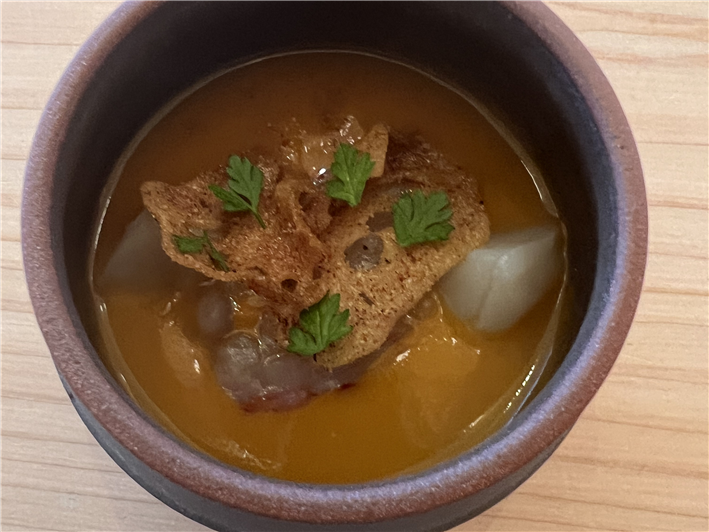
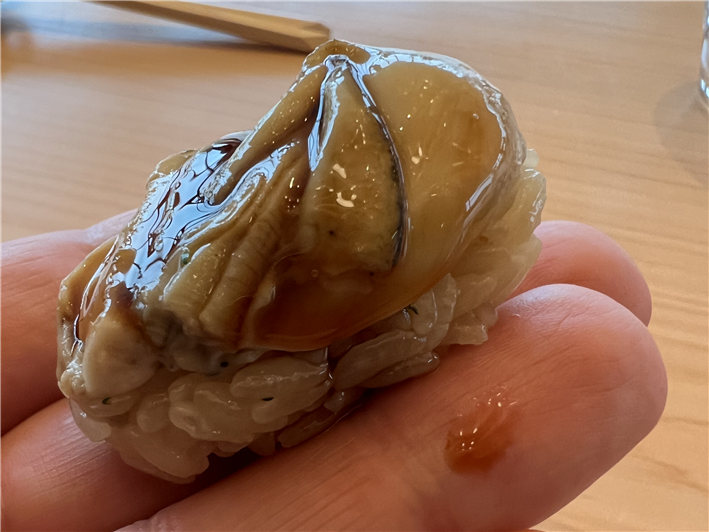
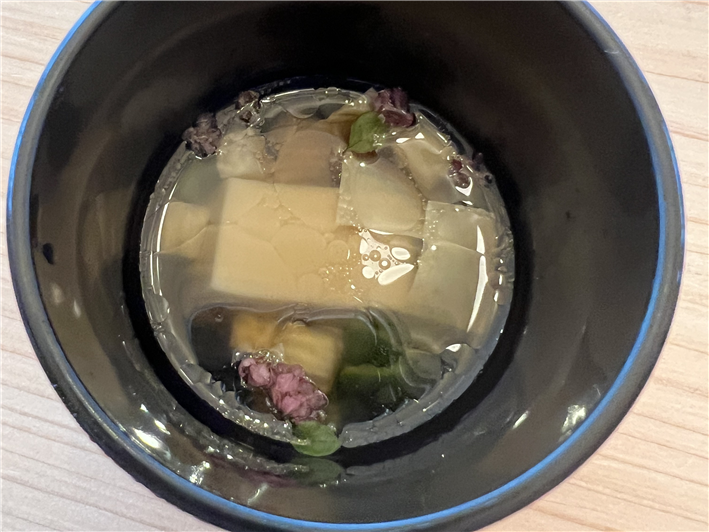
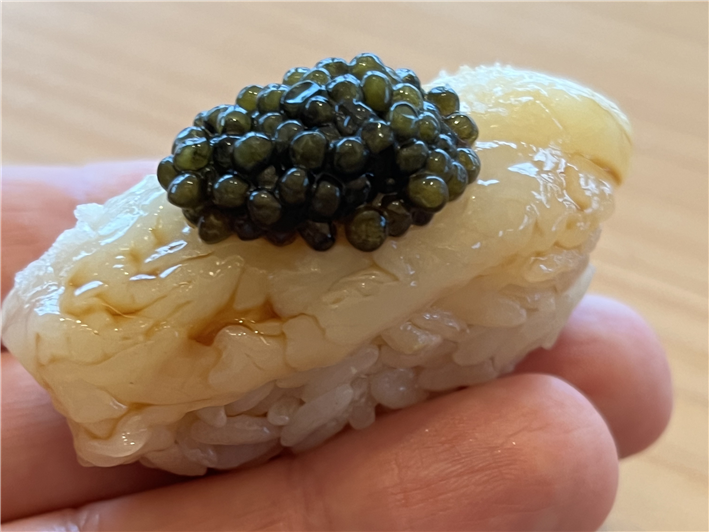
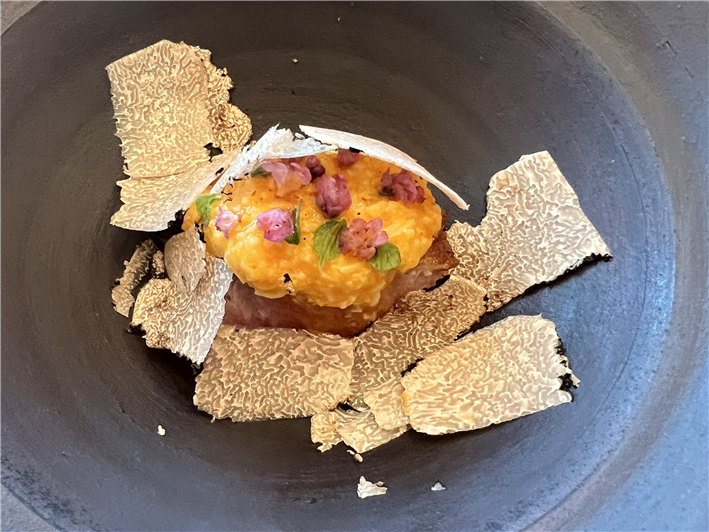
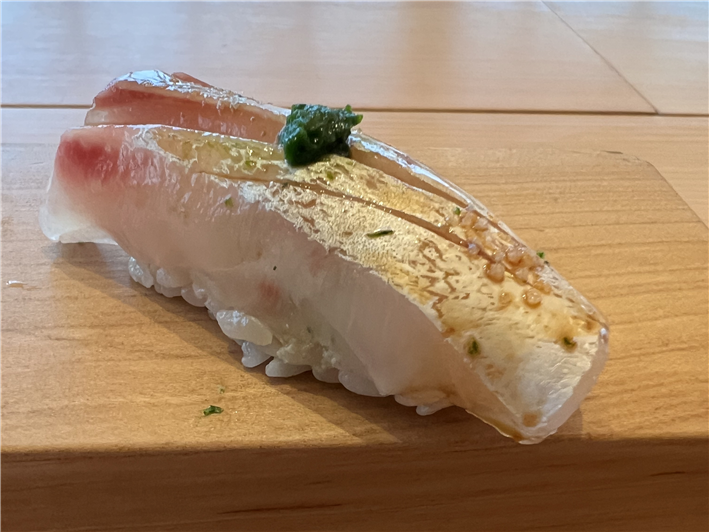
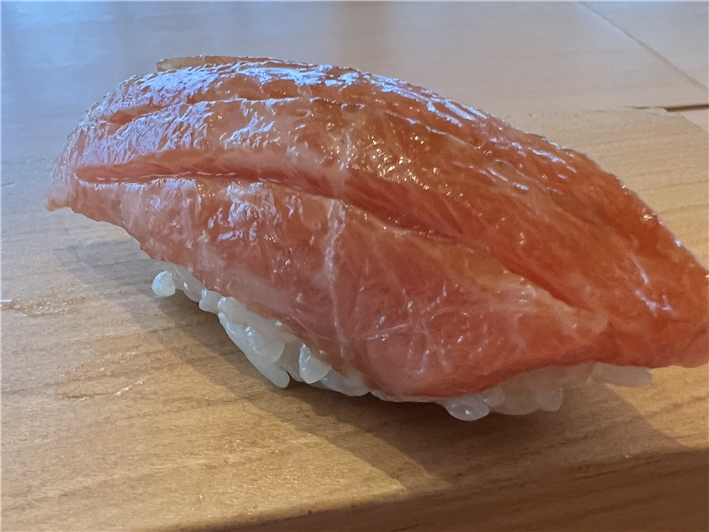
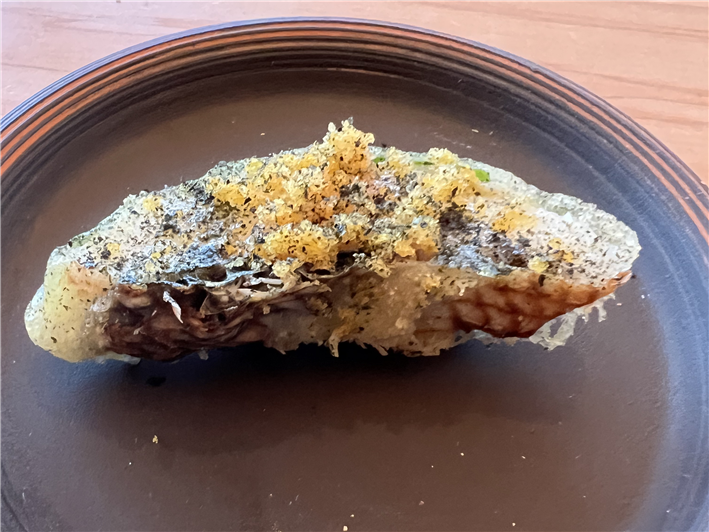
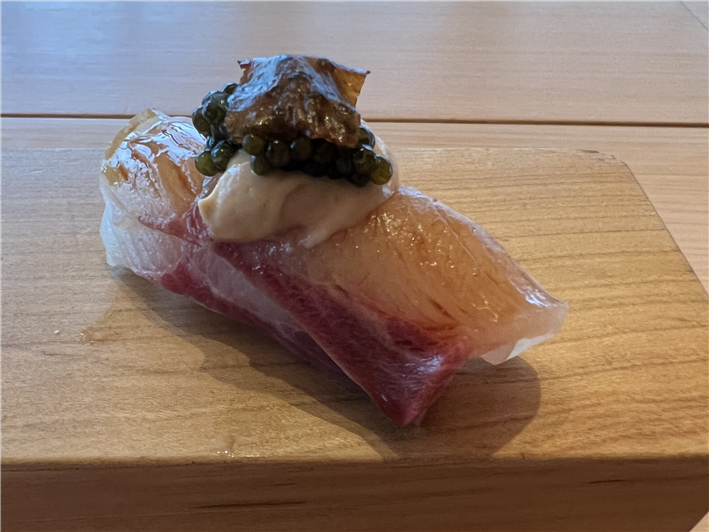
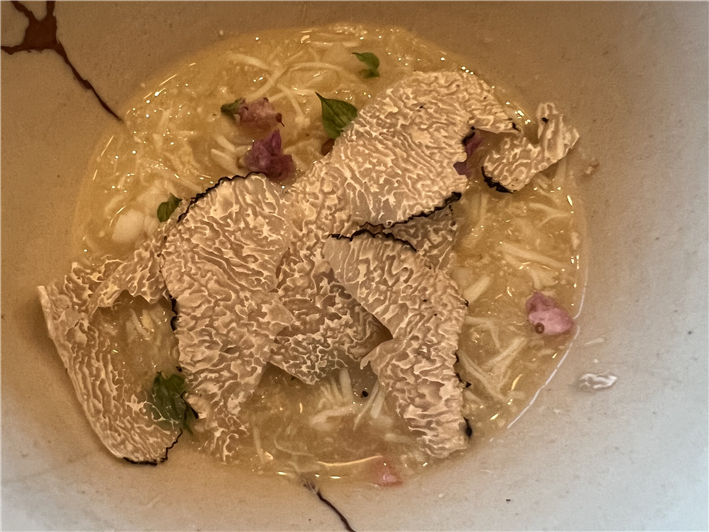
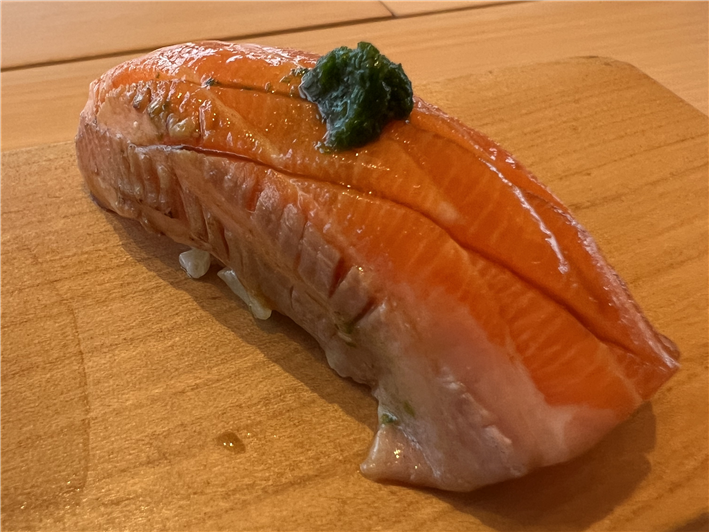
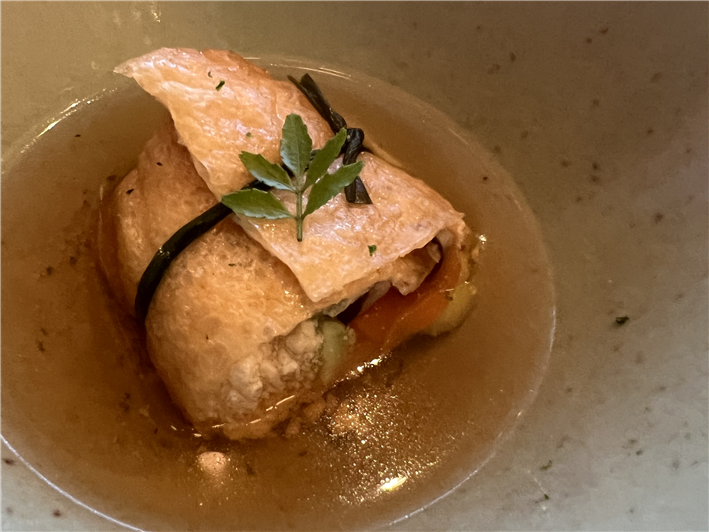
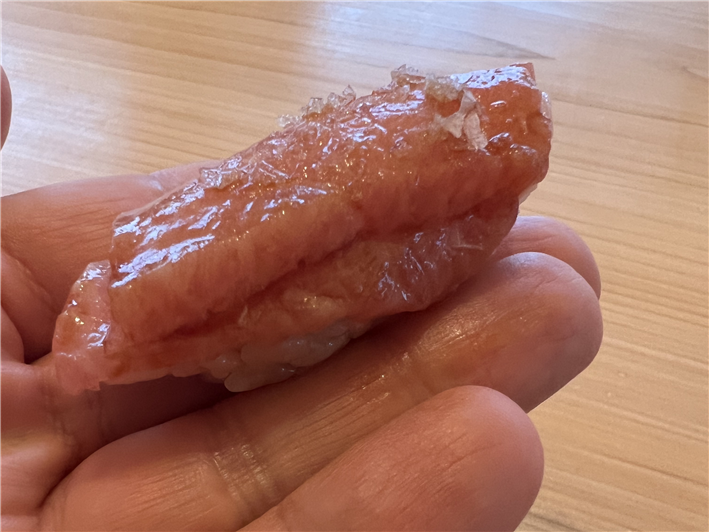
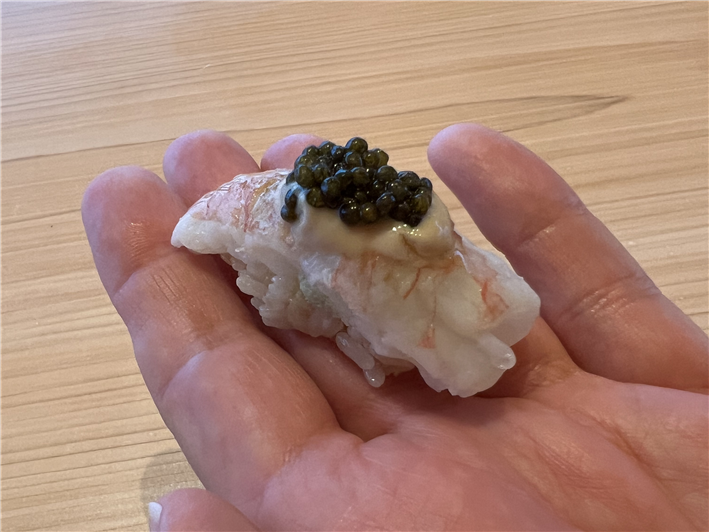
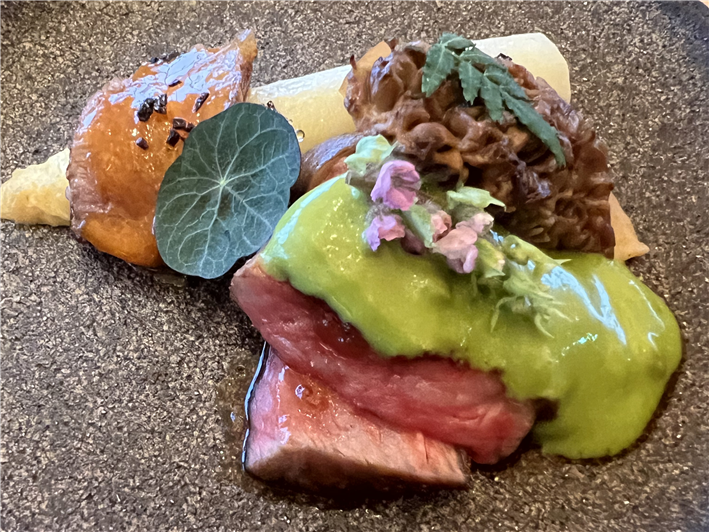
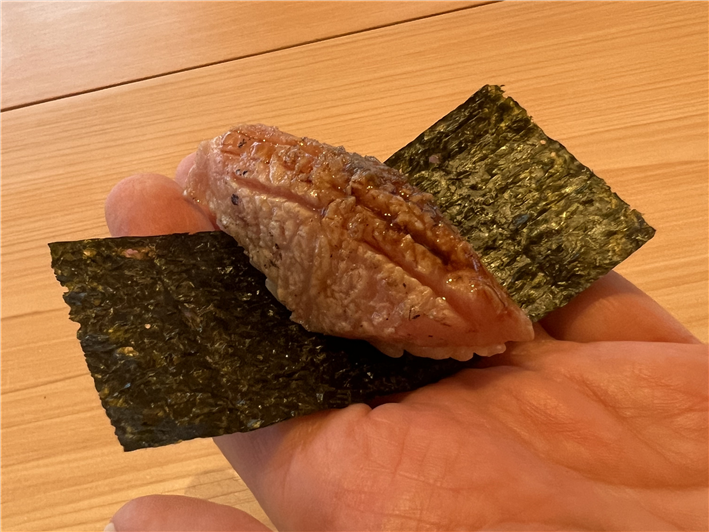

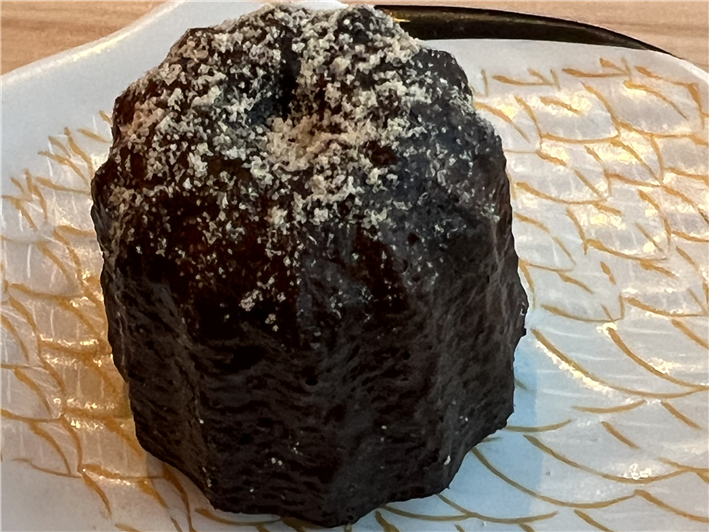
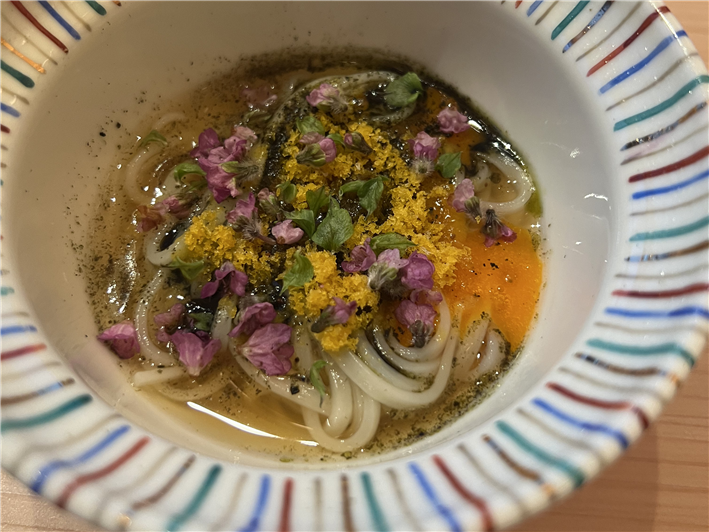
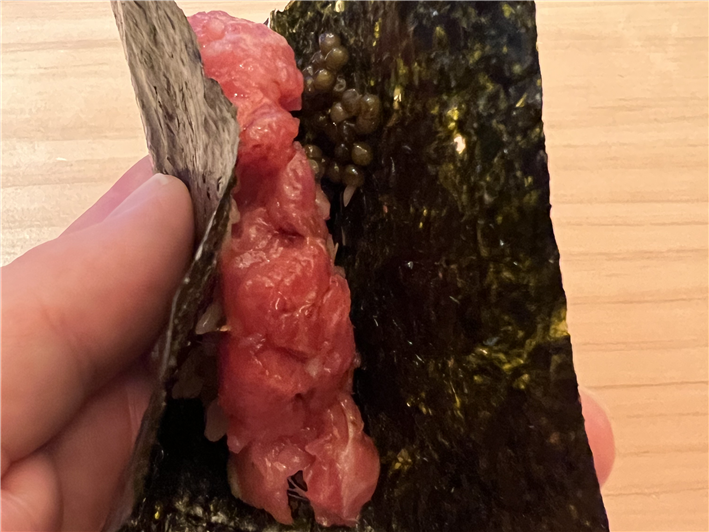
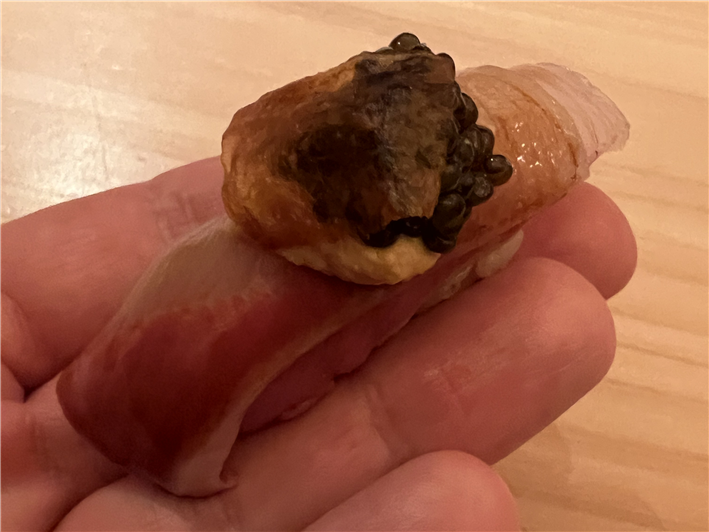
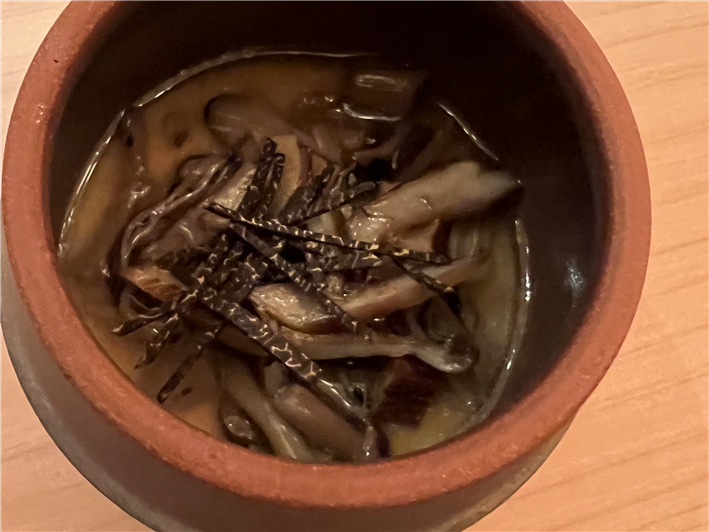
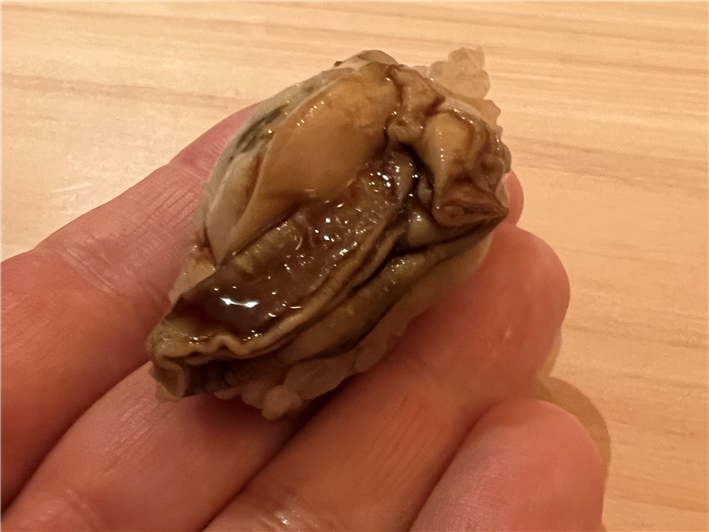
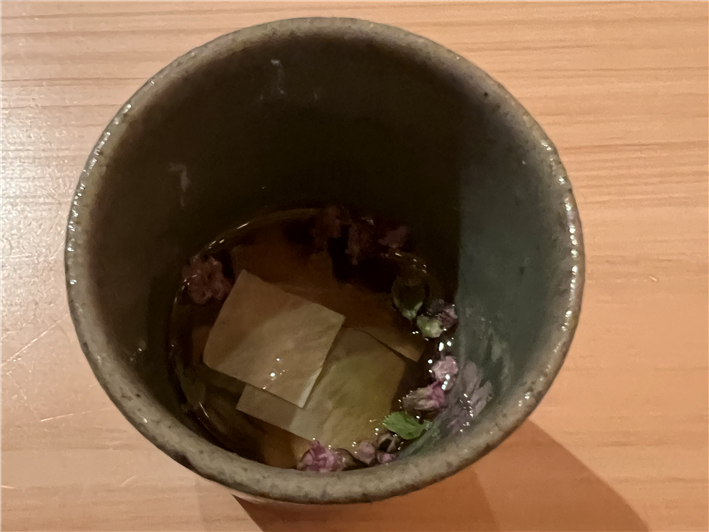
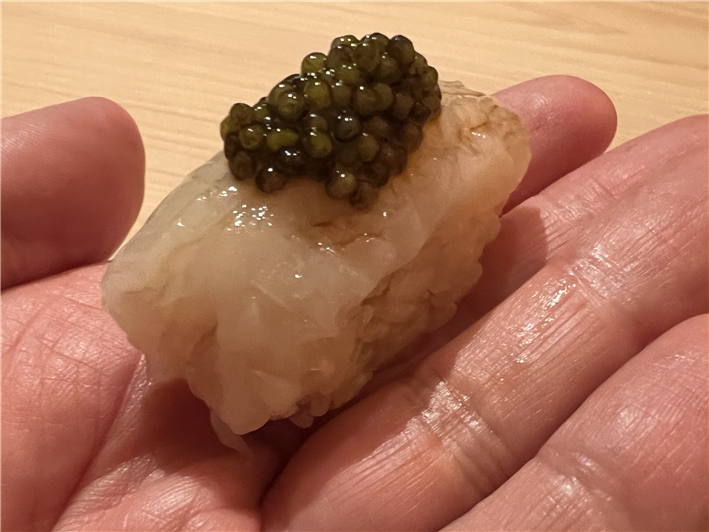
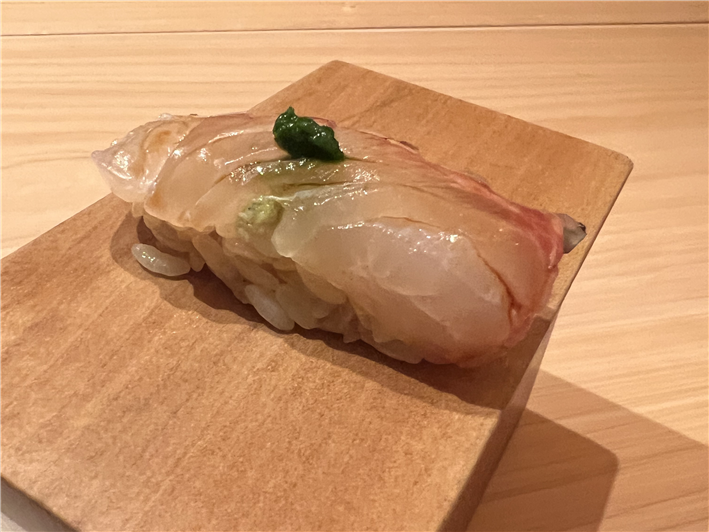
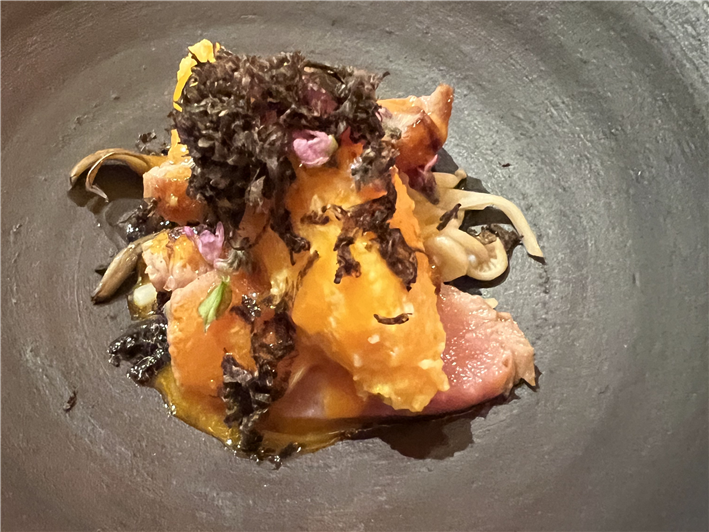
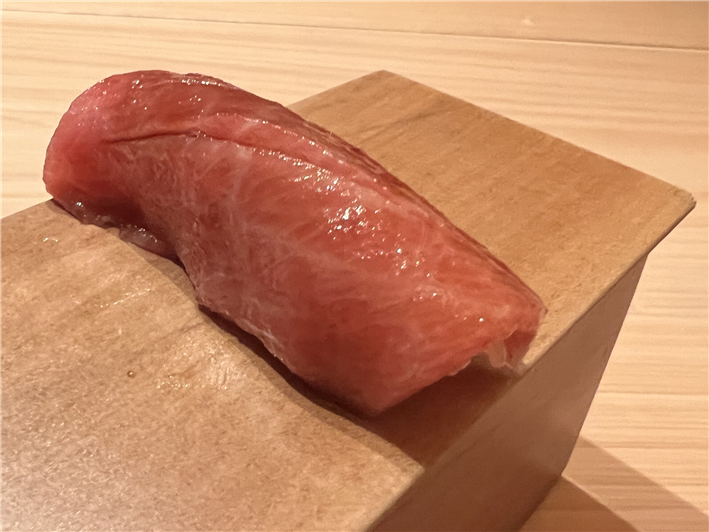
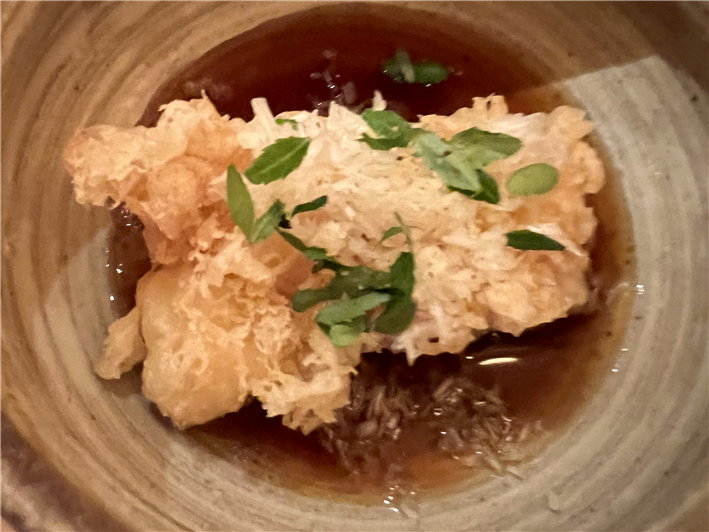
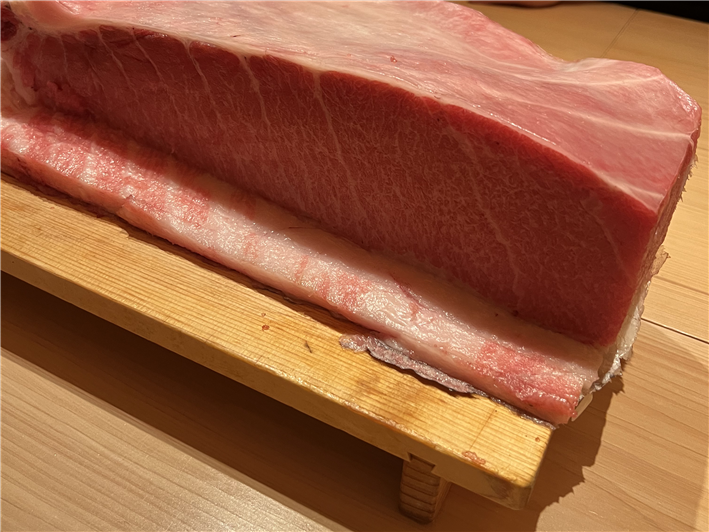
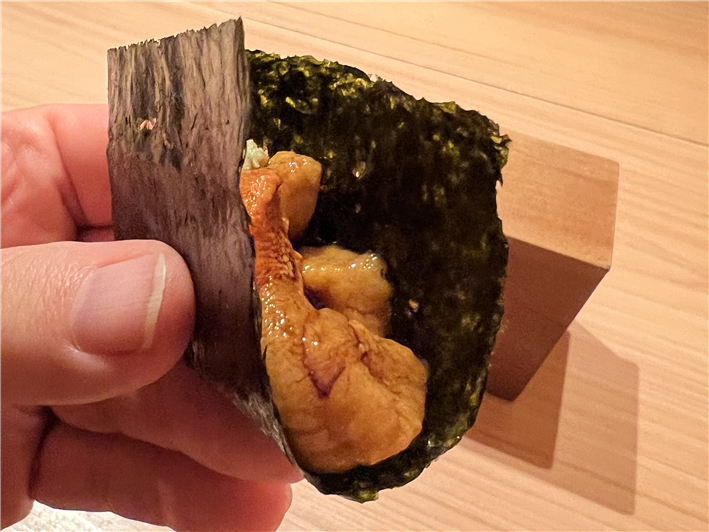
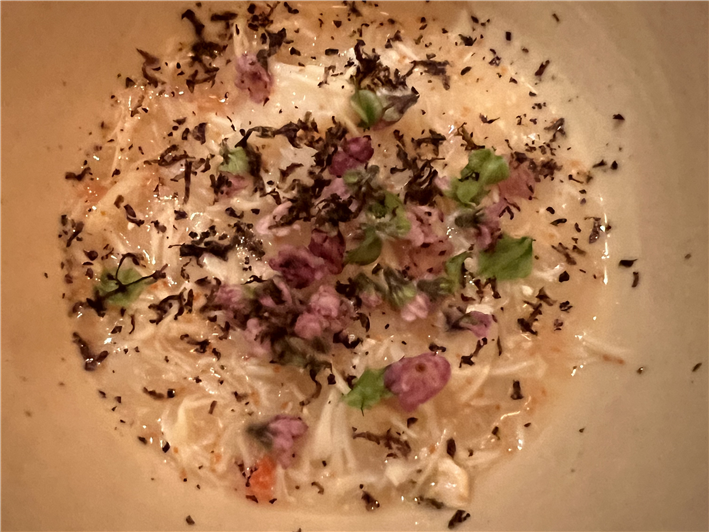
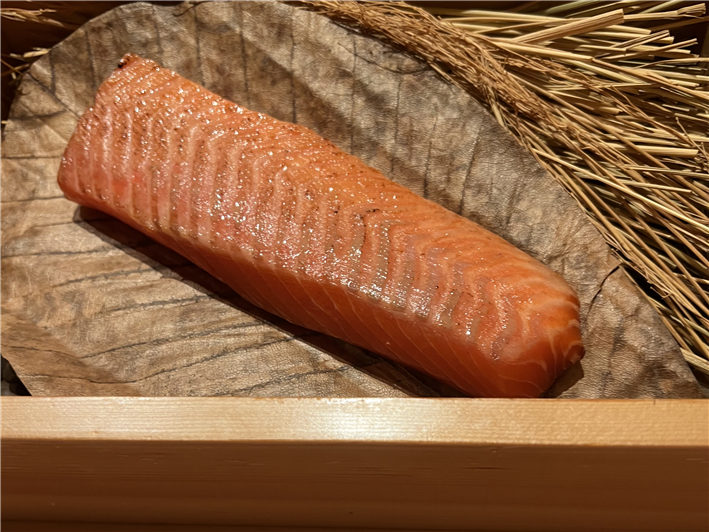
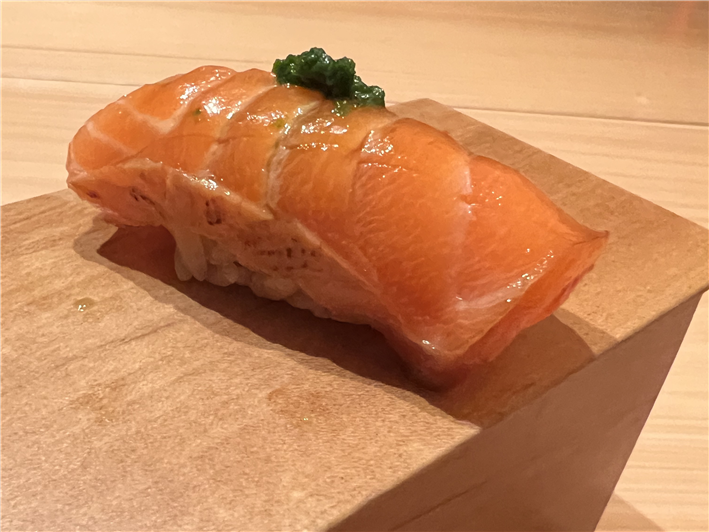
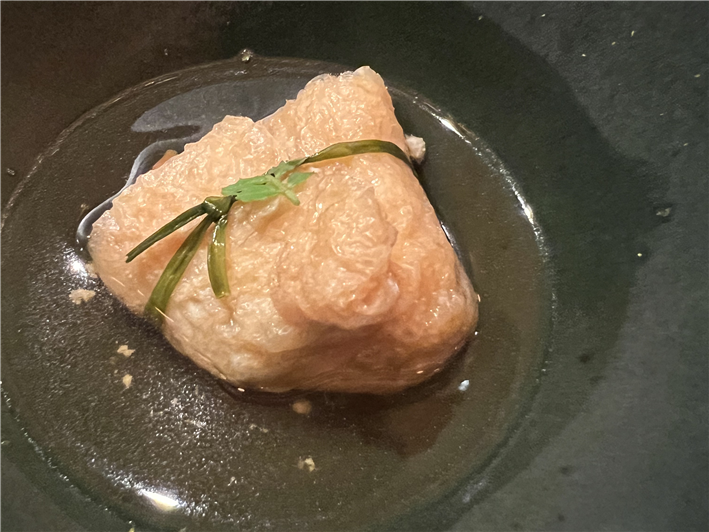
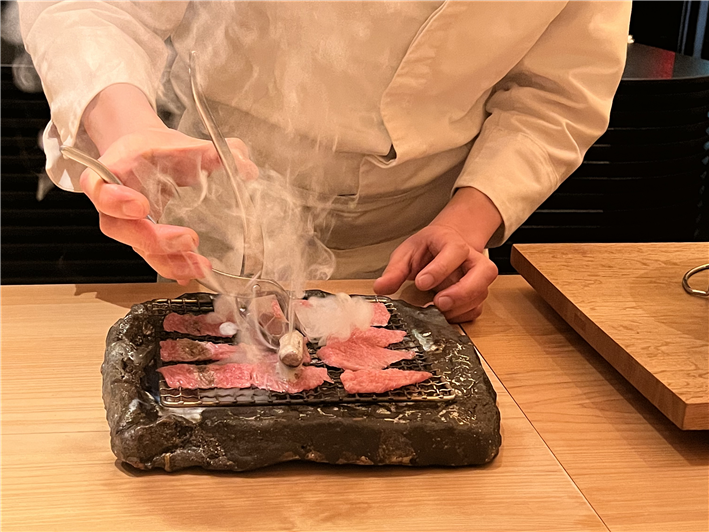
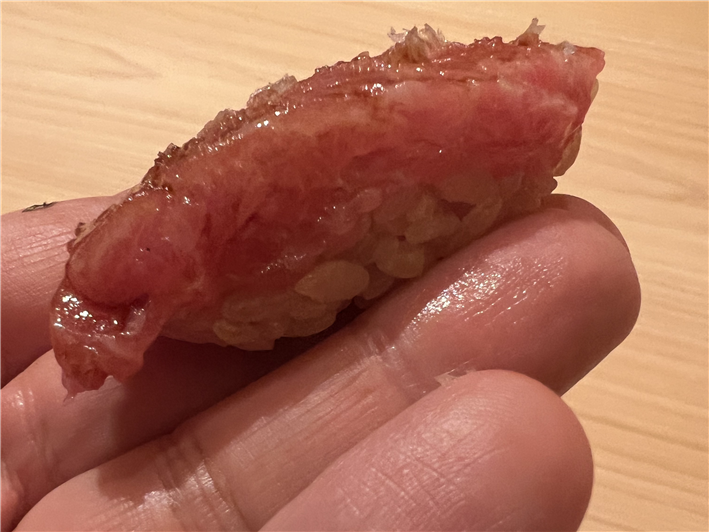
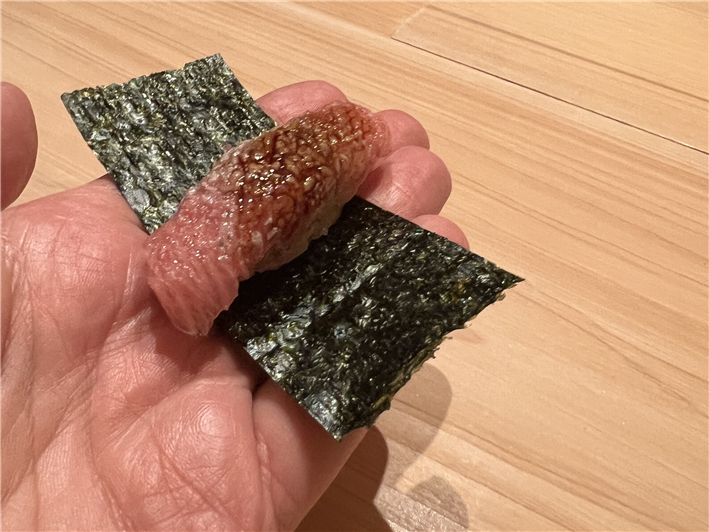
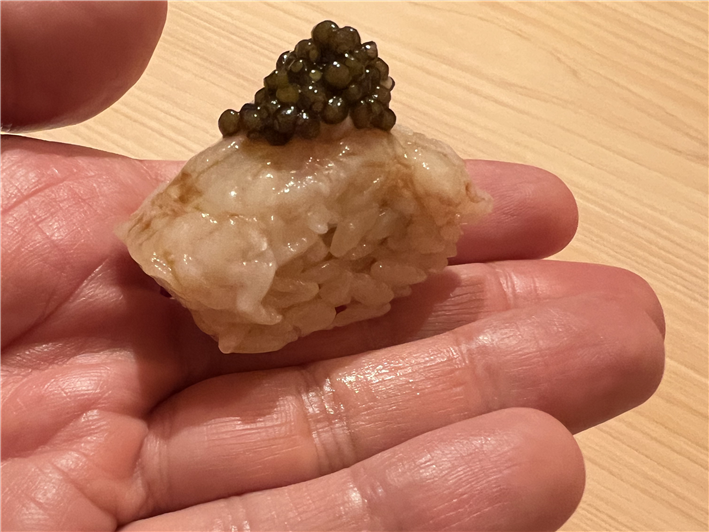
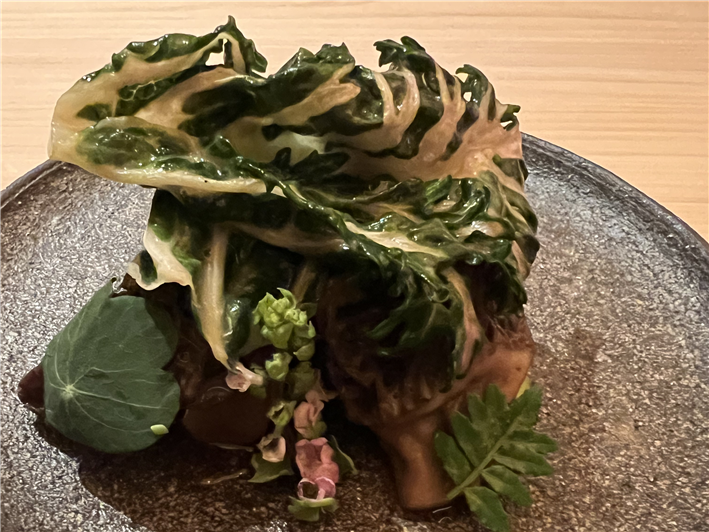
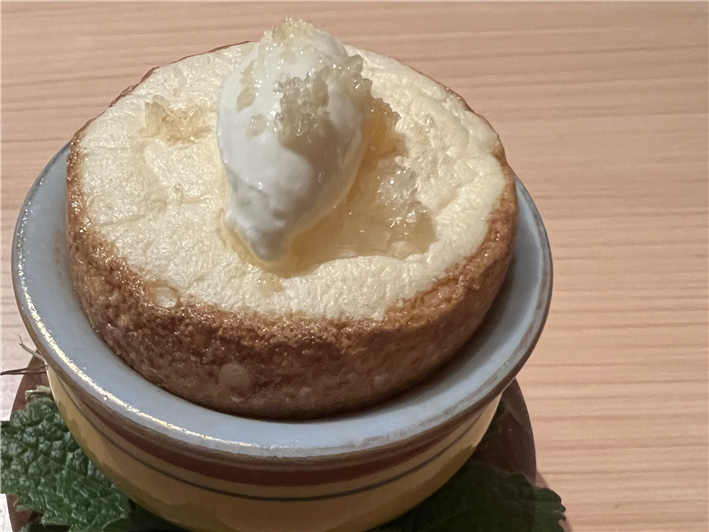

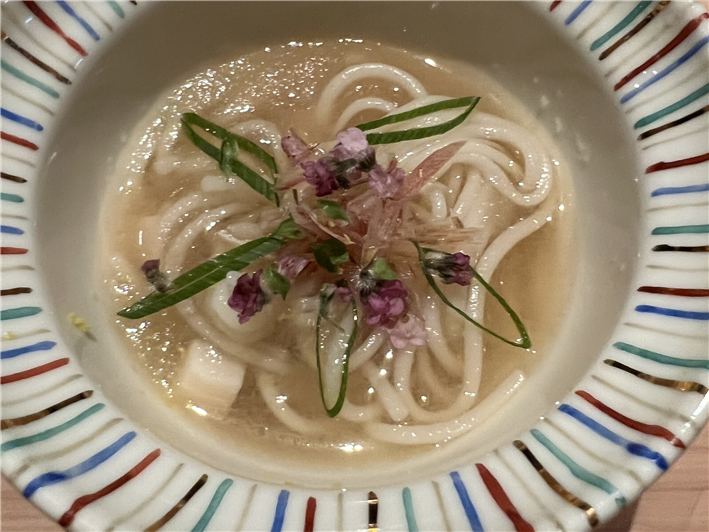
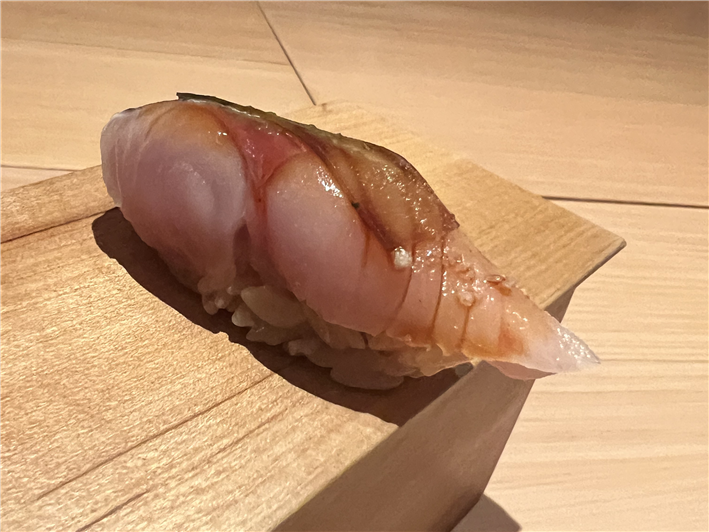
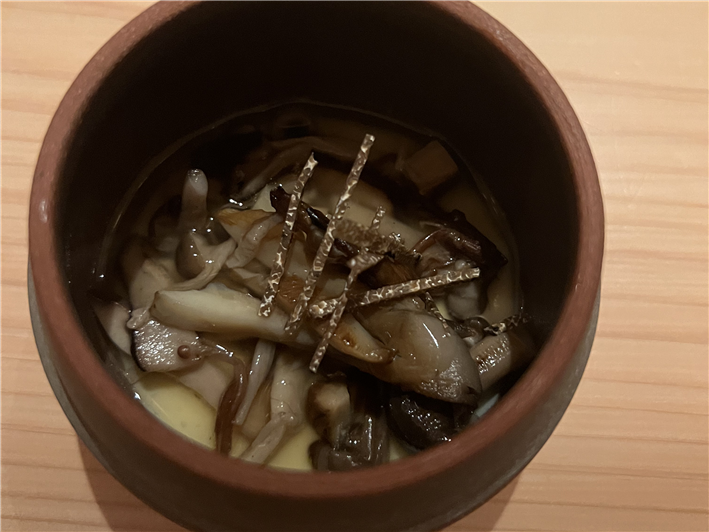
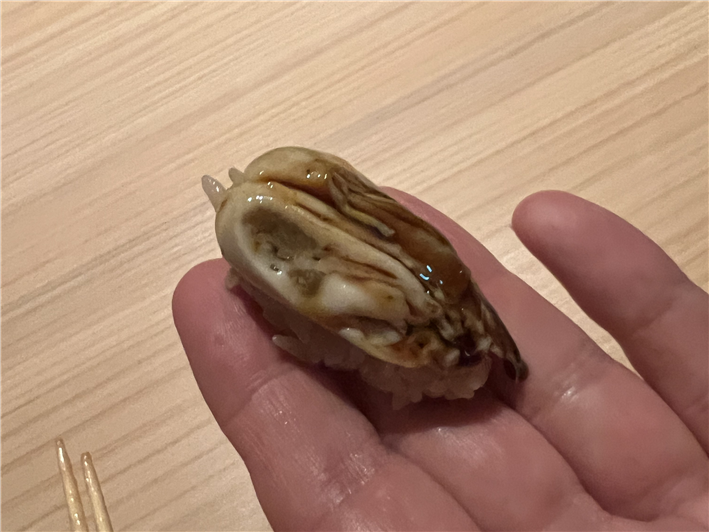
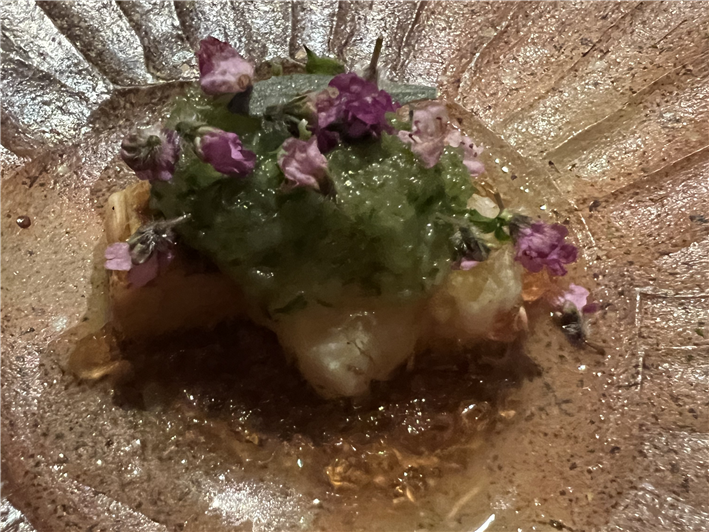
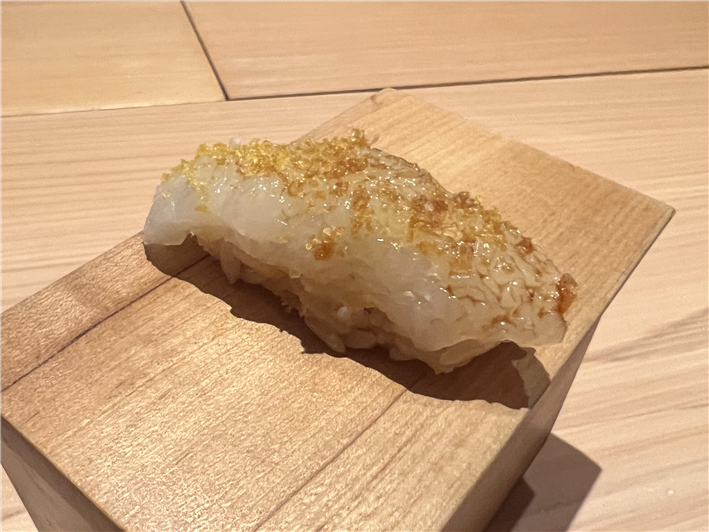
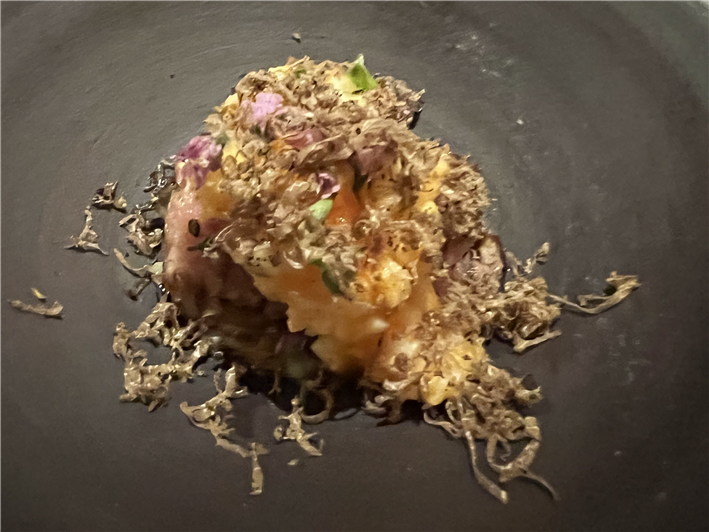

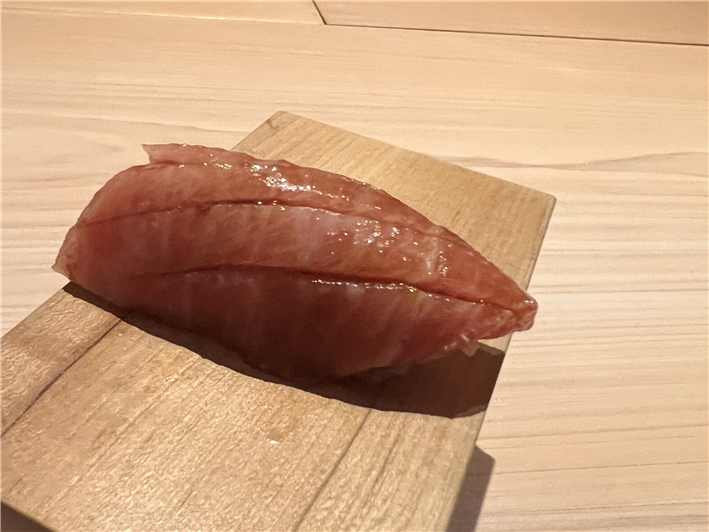

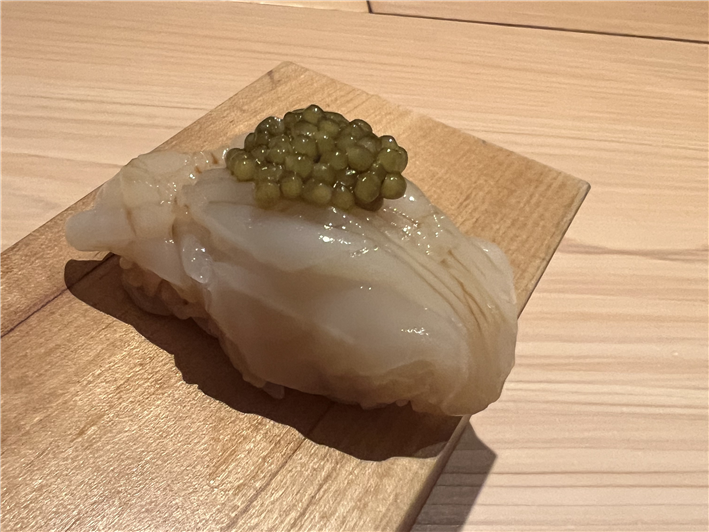
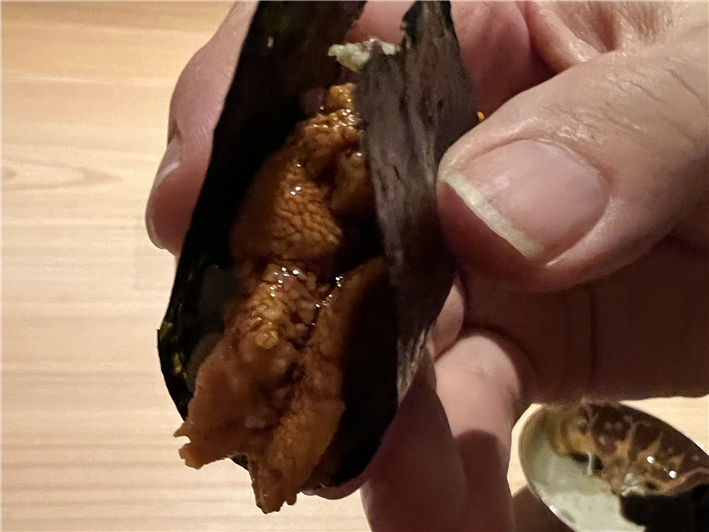
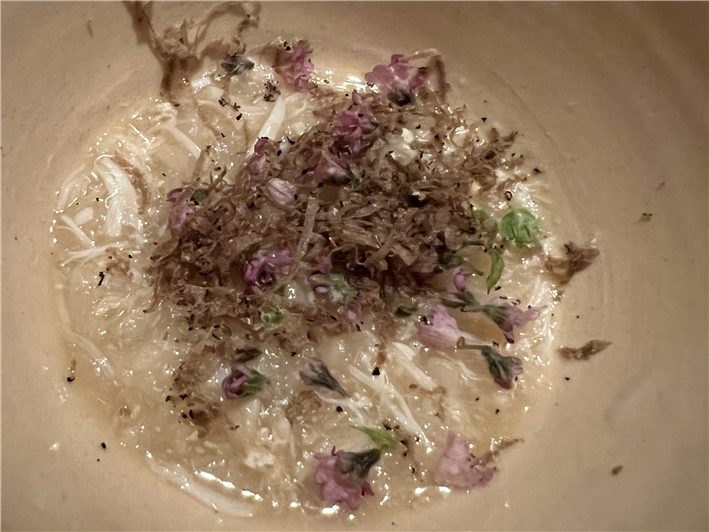
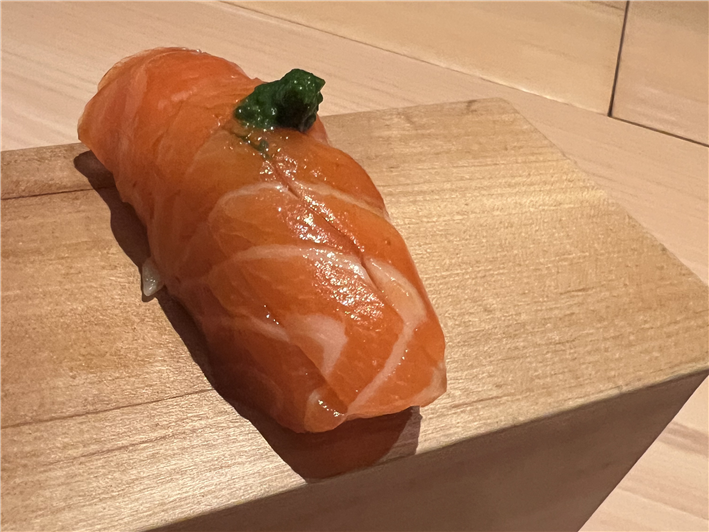
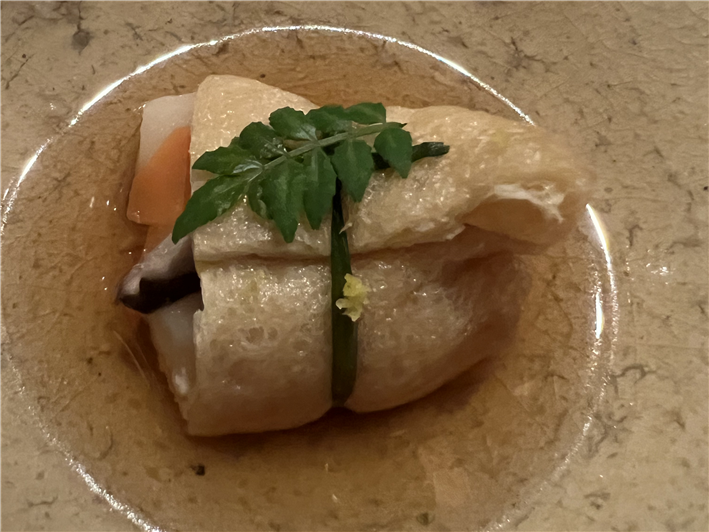
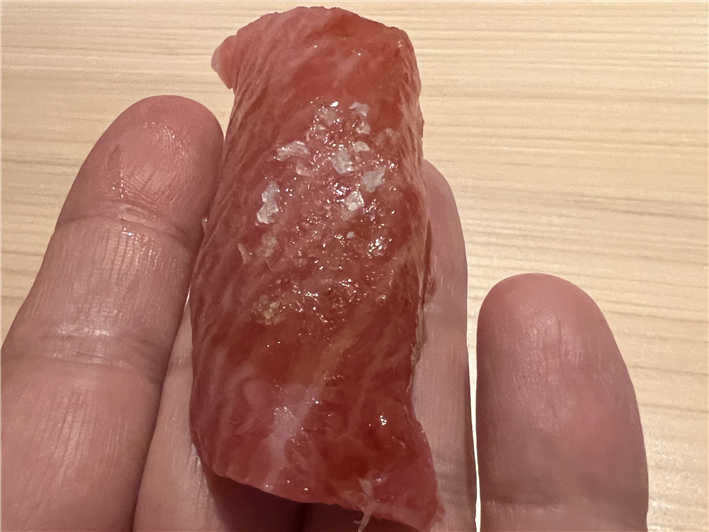
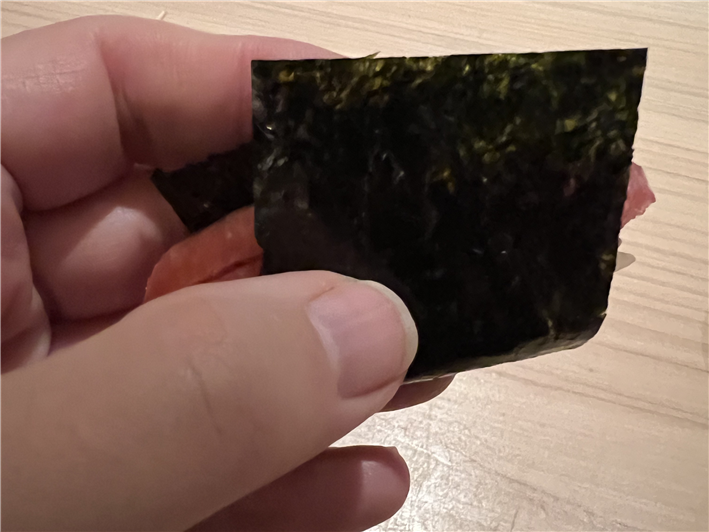
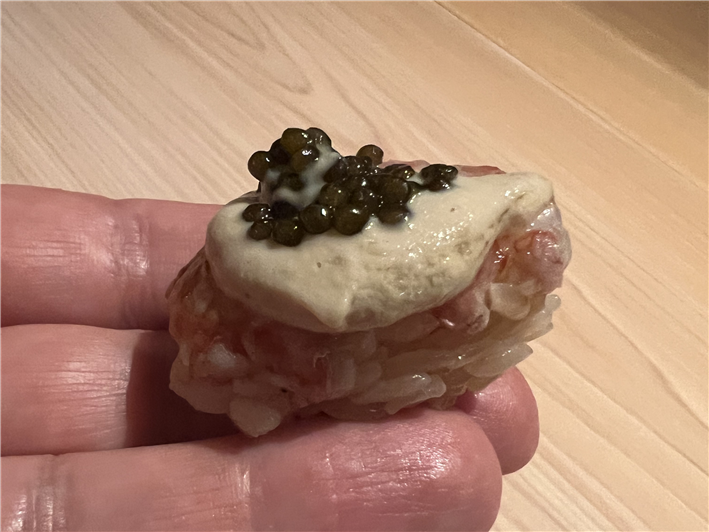
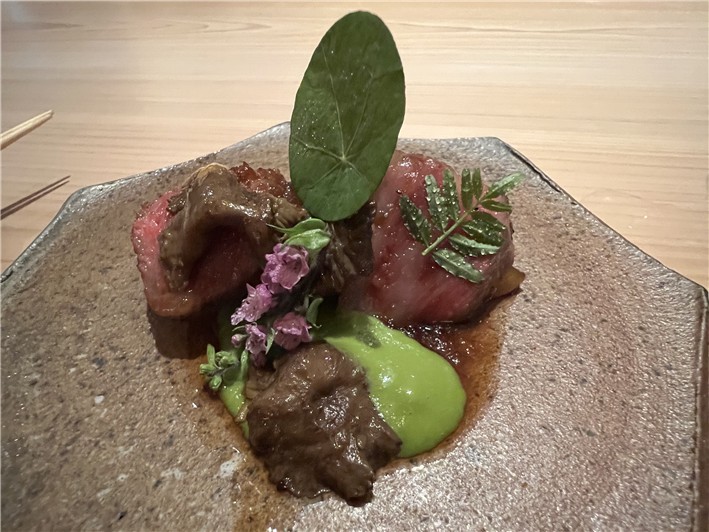
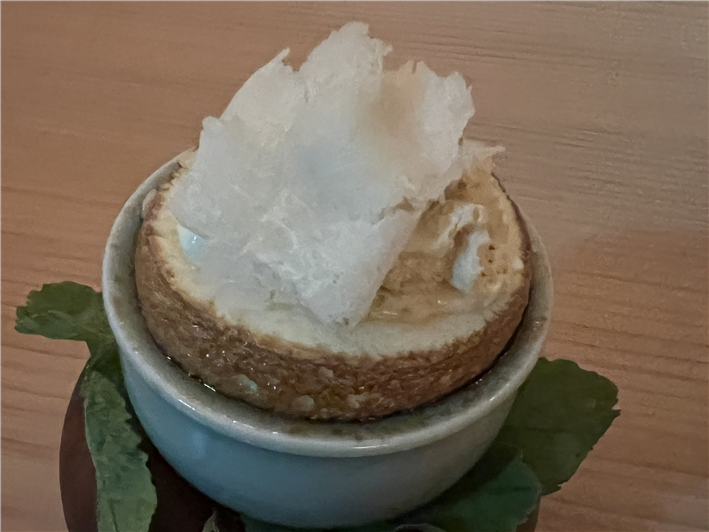
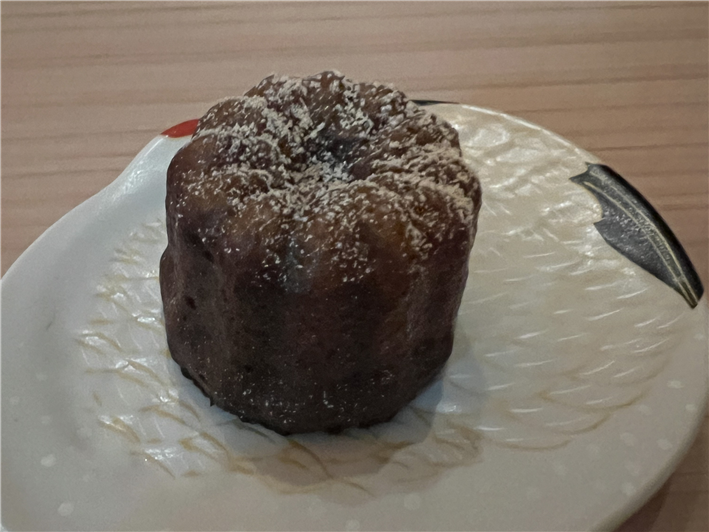
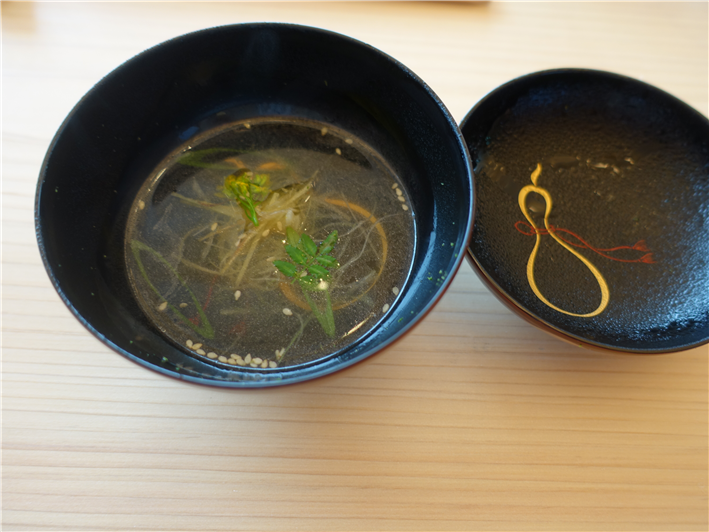
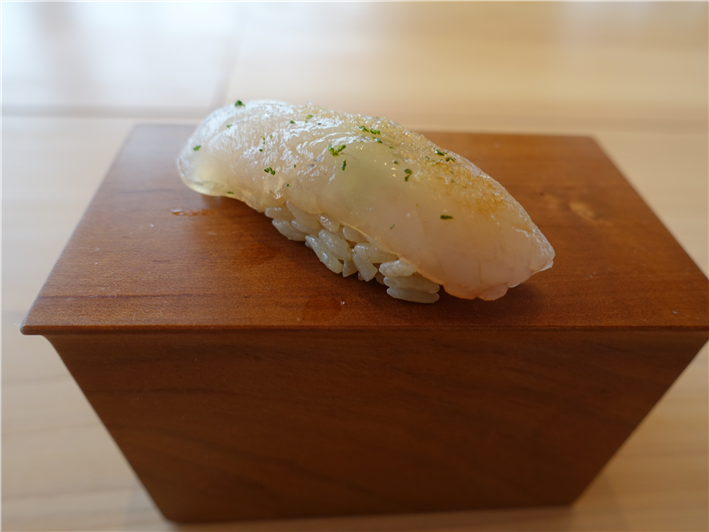
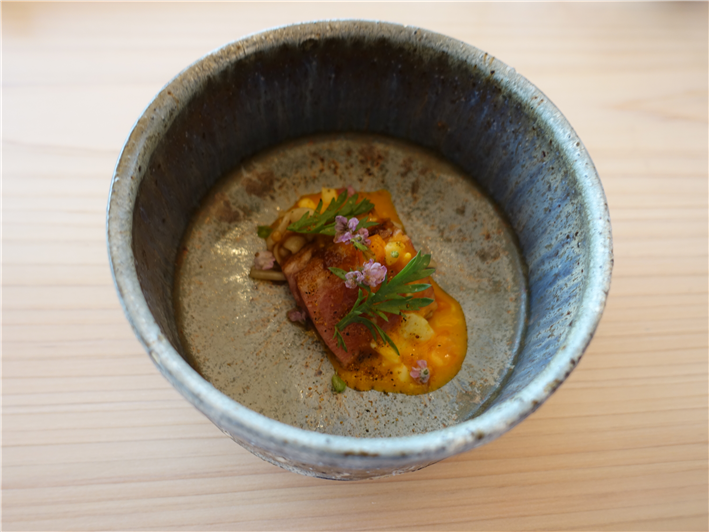
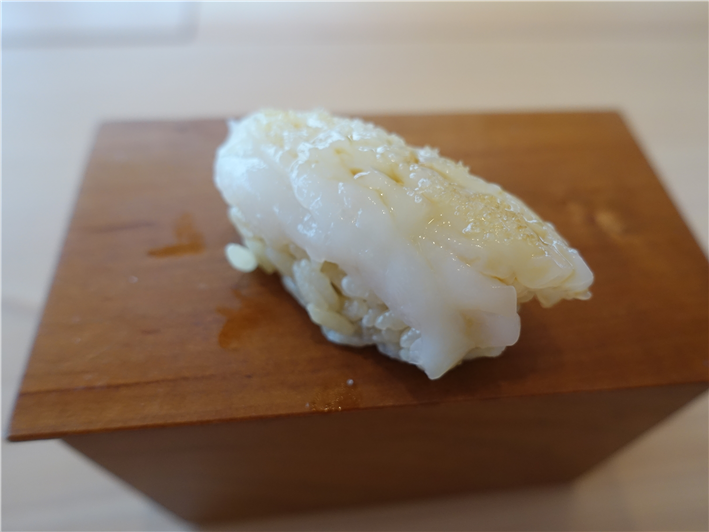
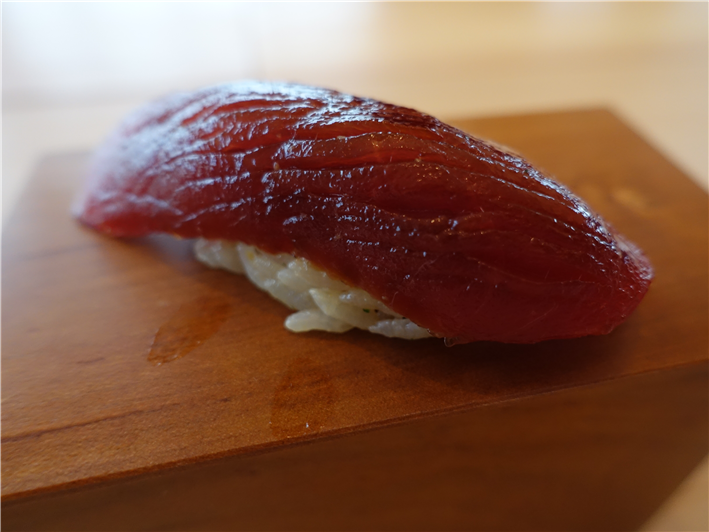
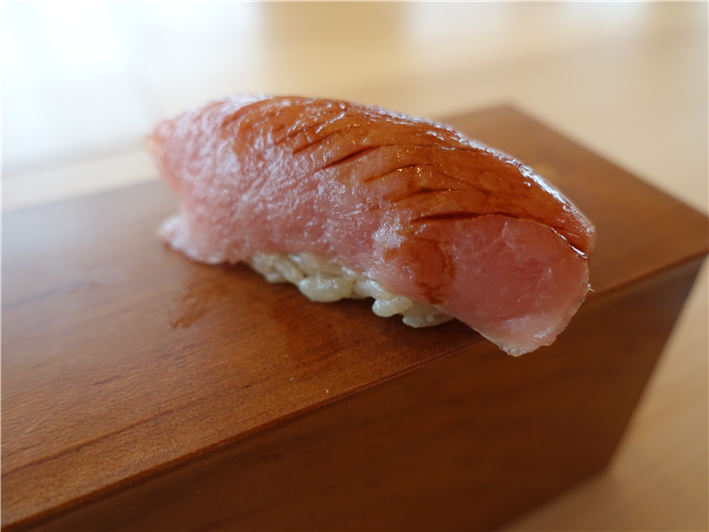
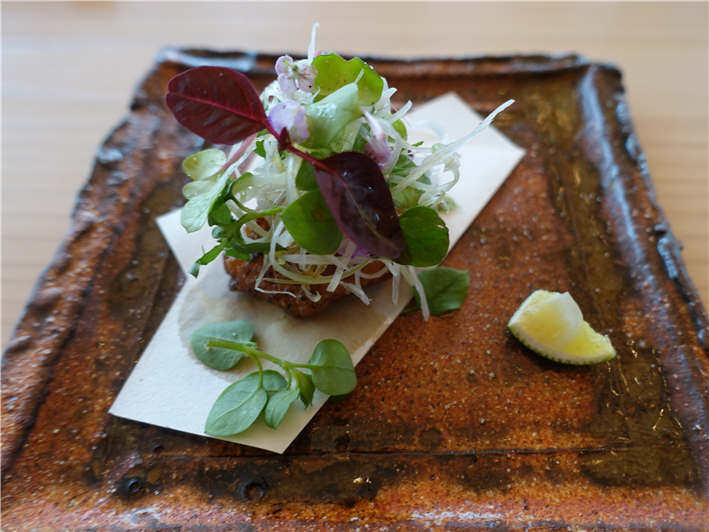
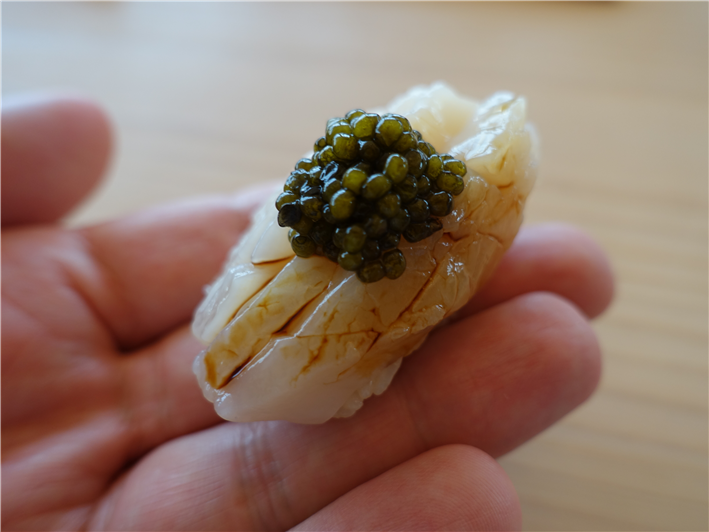
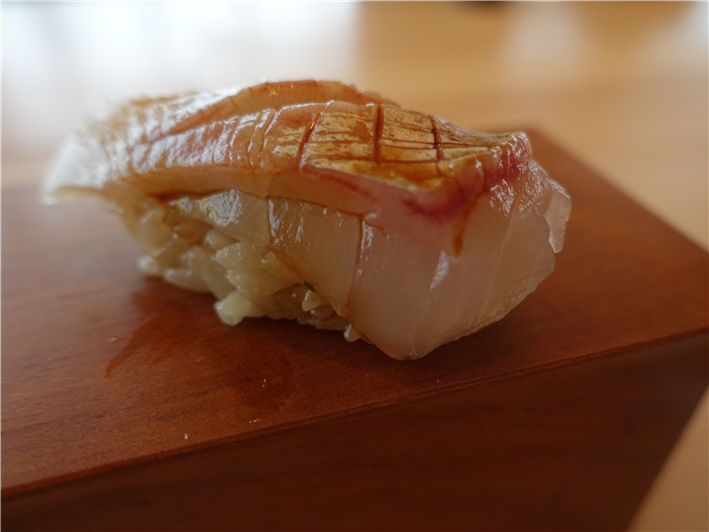
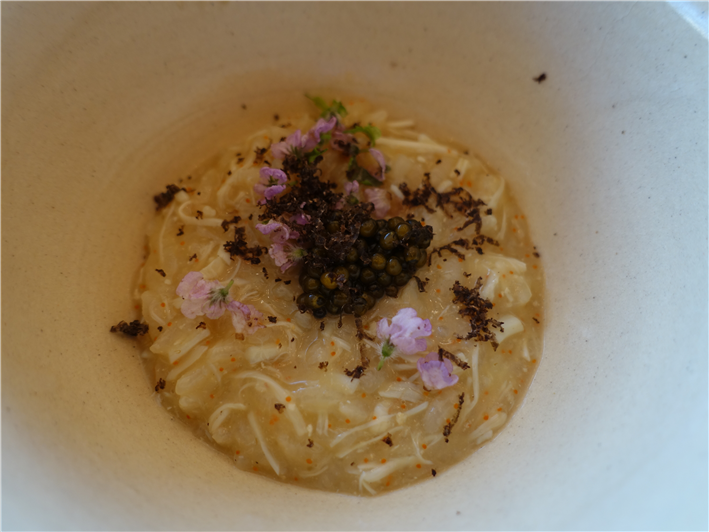
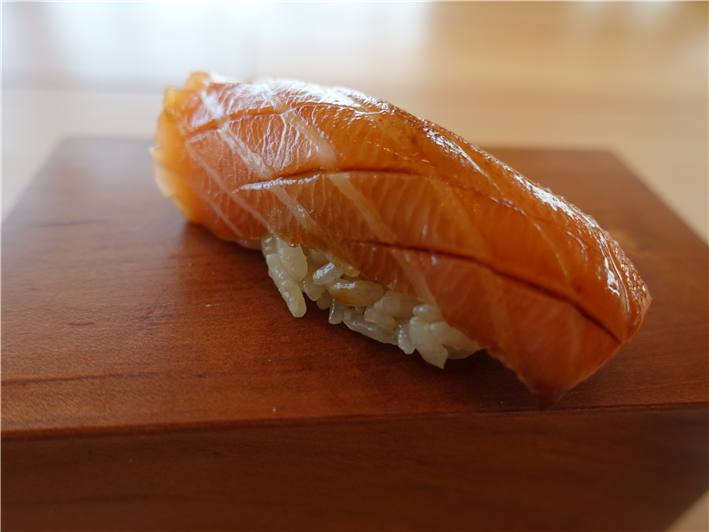
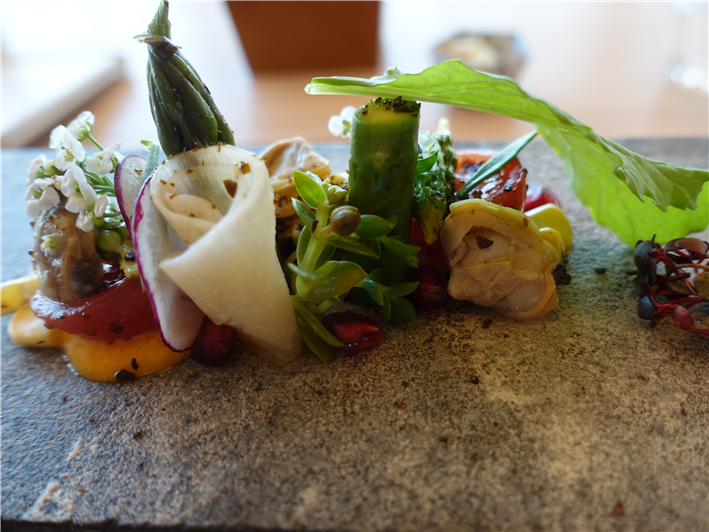
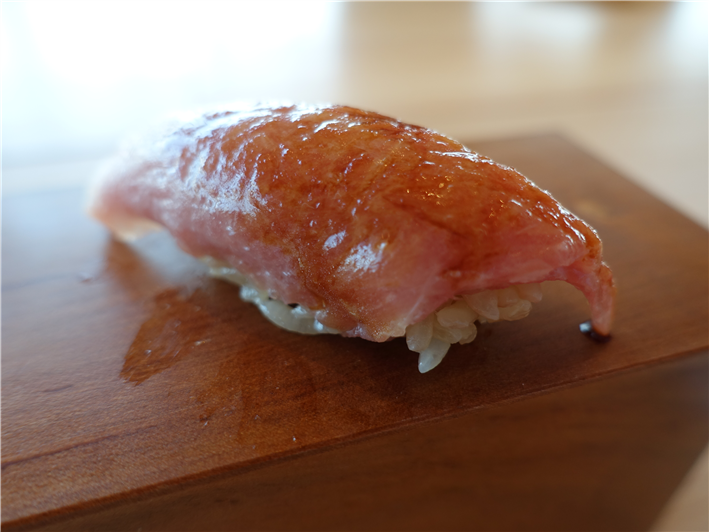
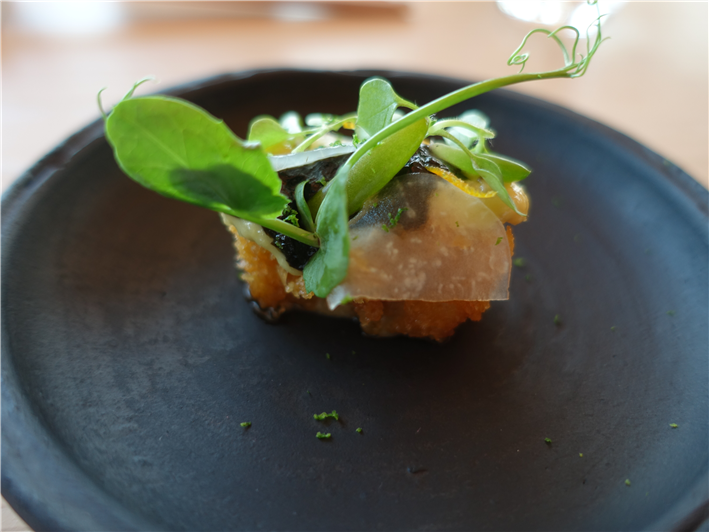
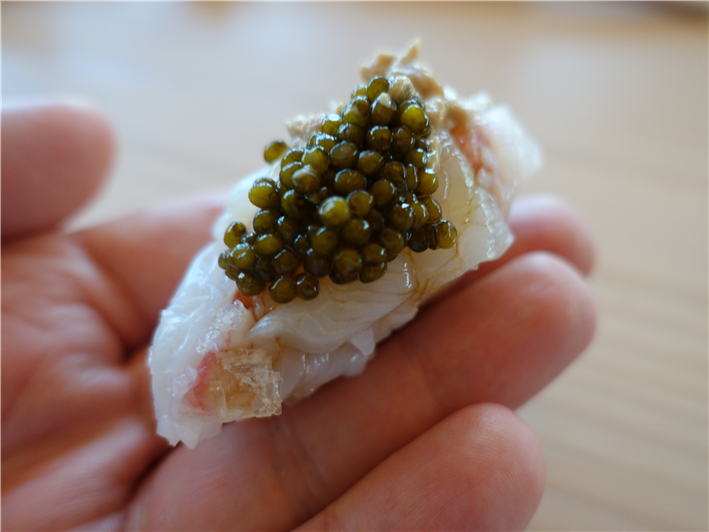
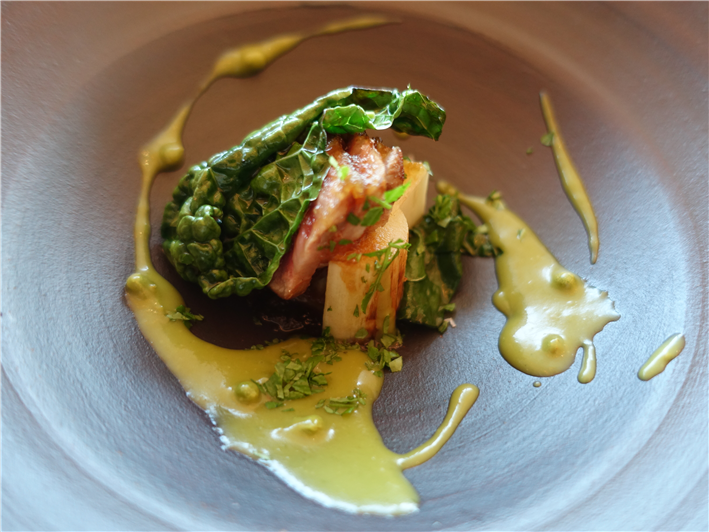
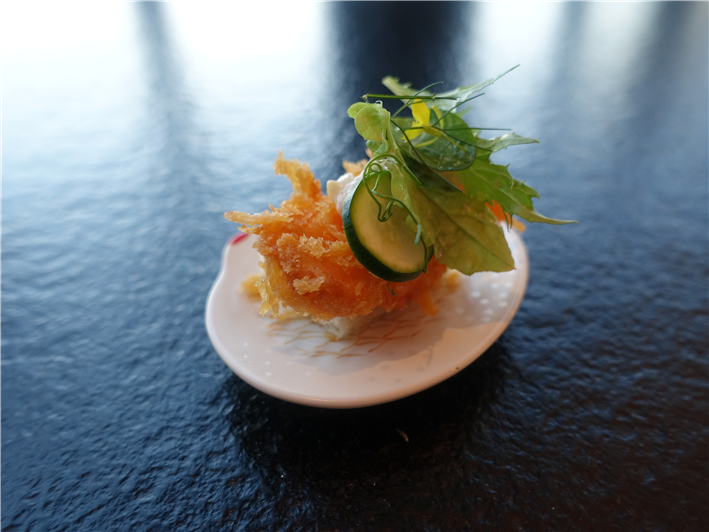
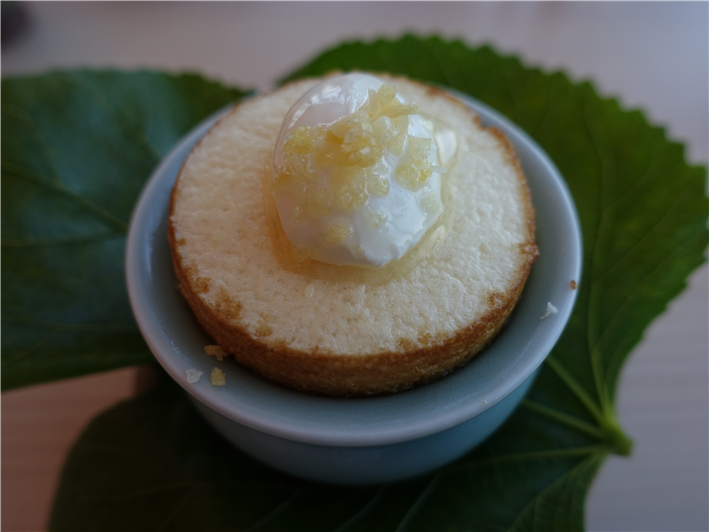
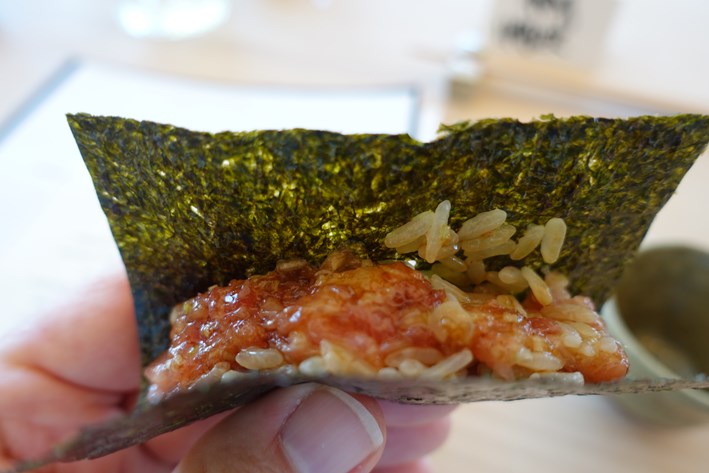
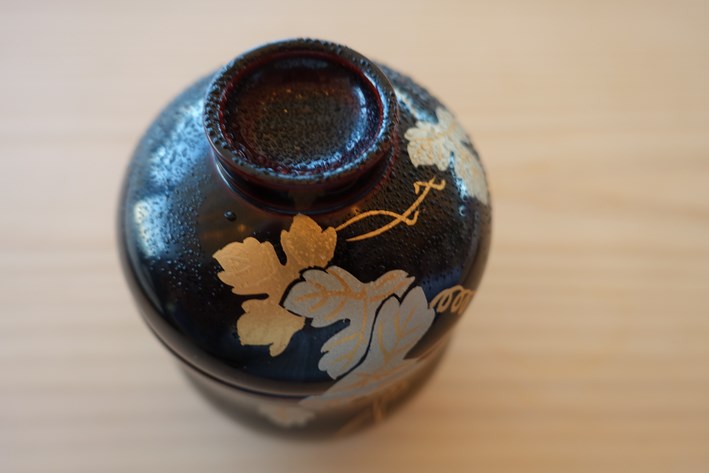

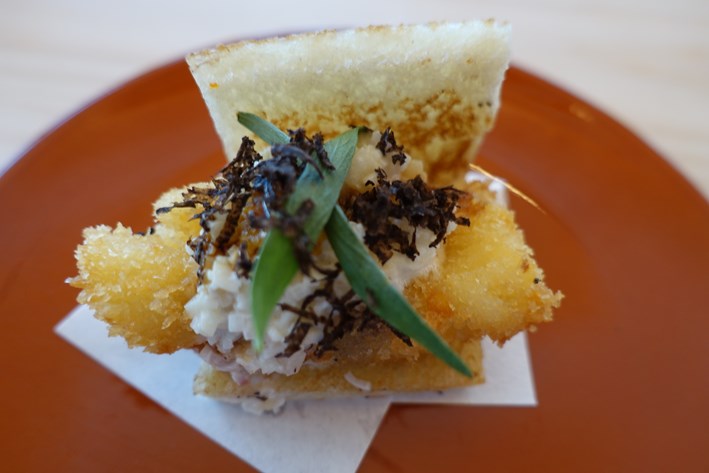
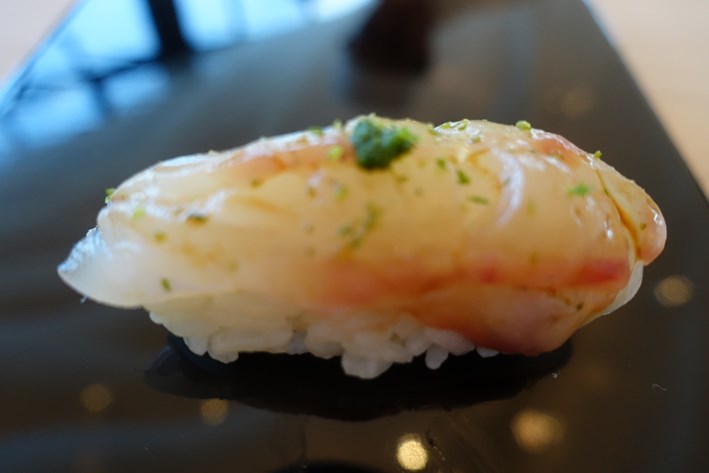
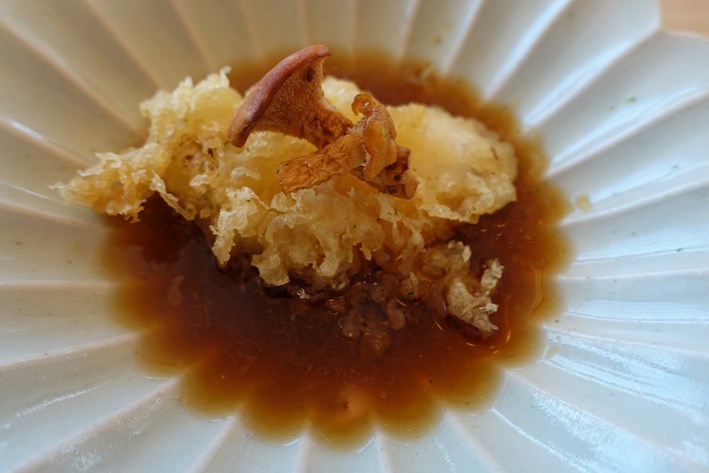
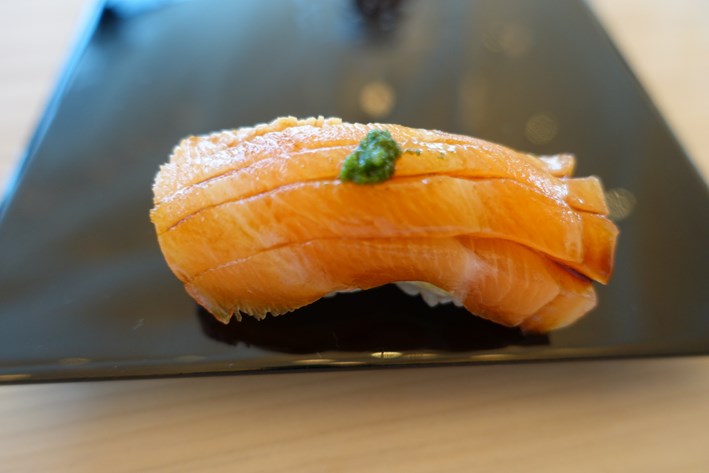
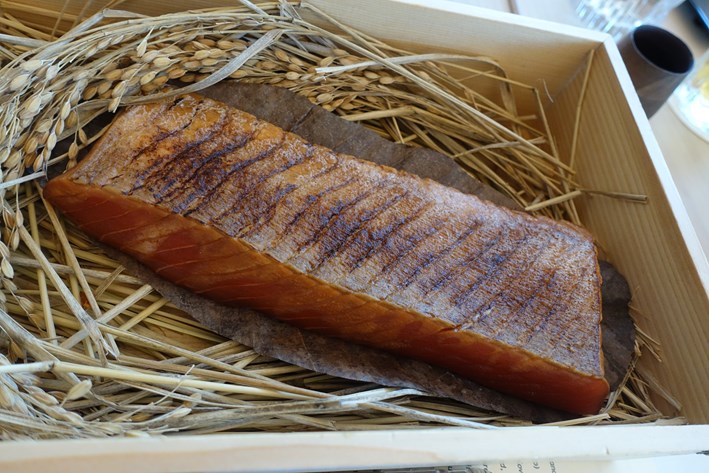
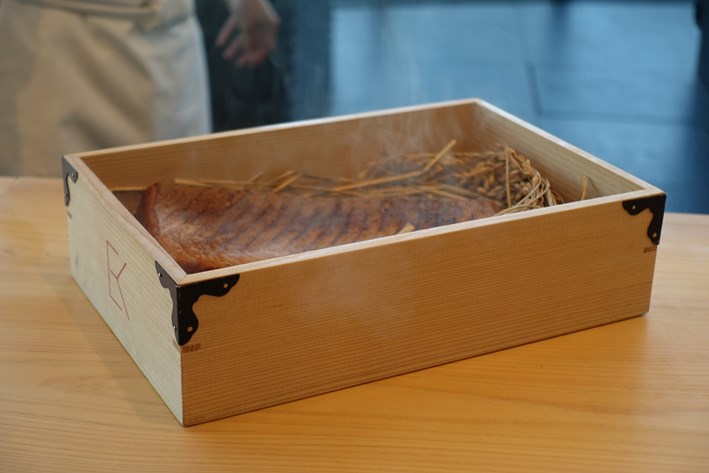
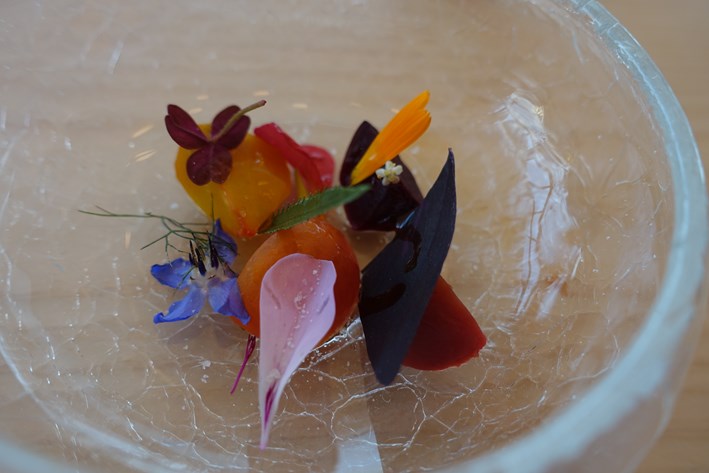
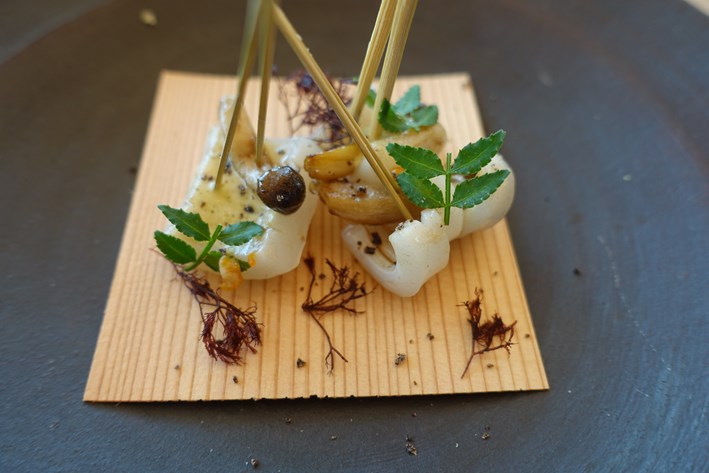
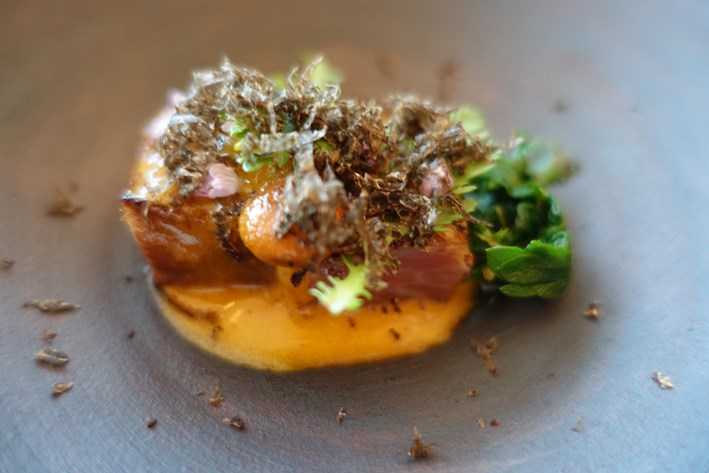
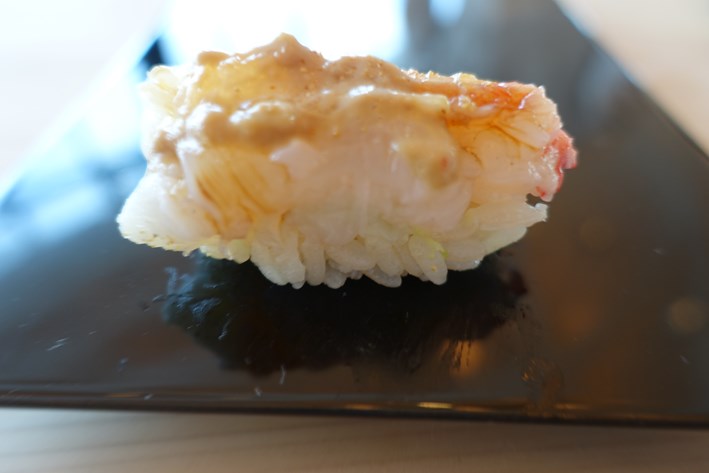
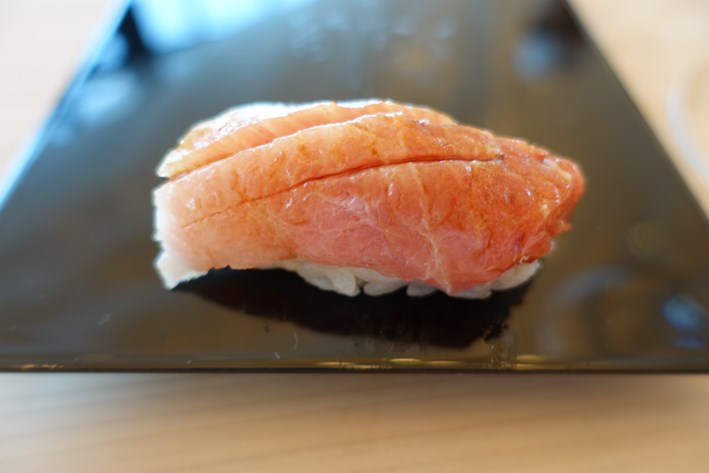
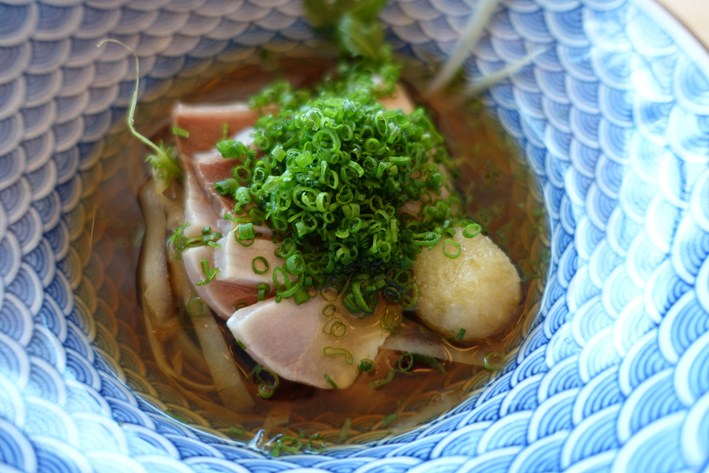
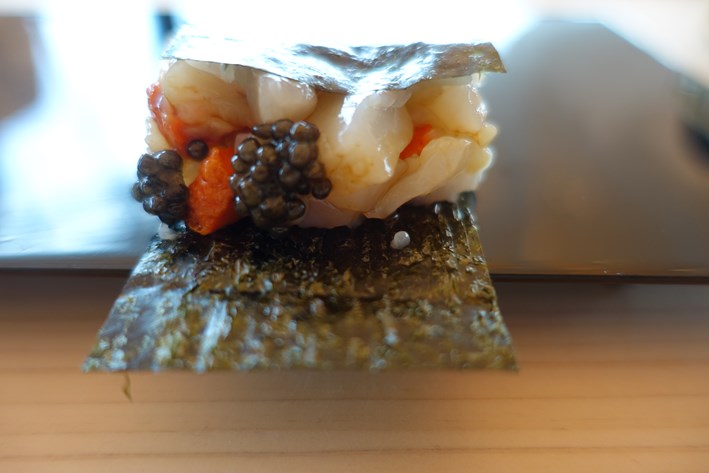
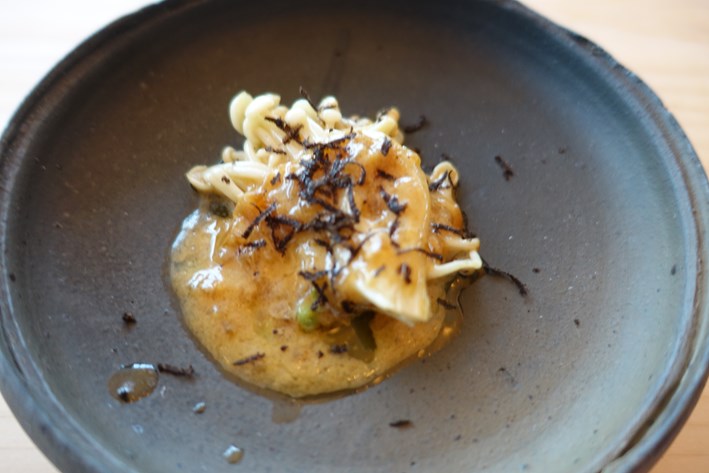
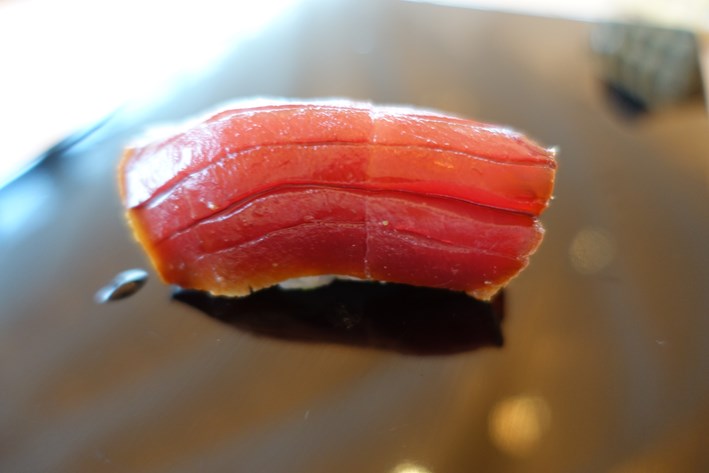
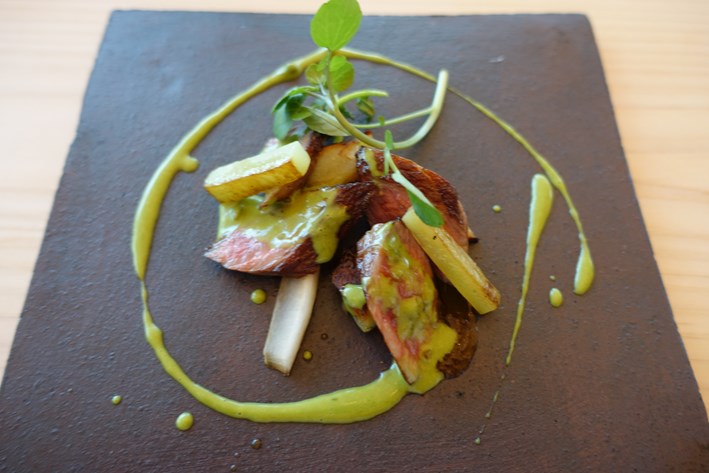
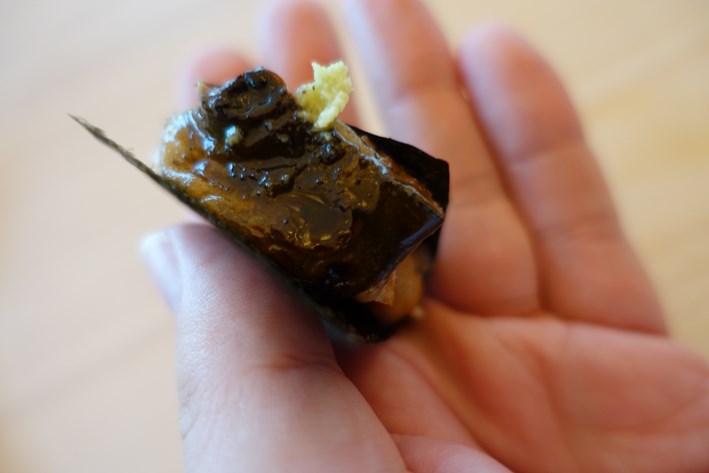
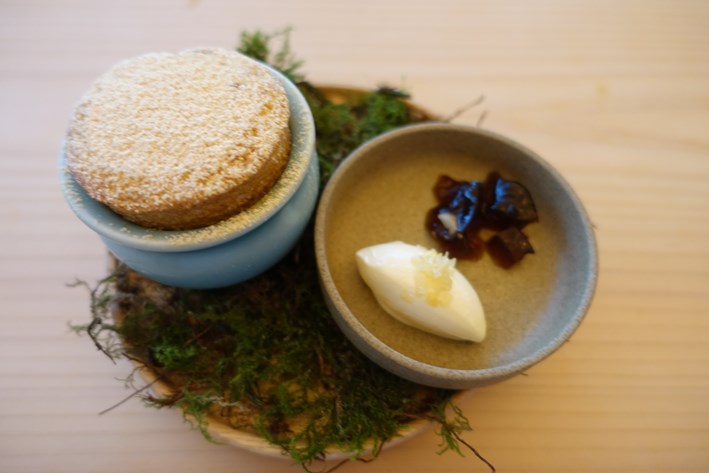
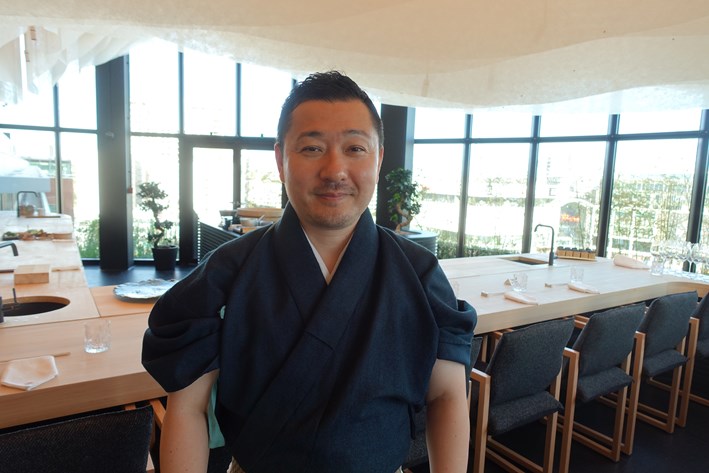


Add a comment
Thank you for submitting your comment, this will be checked and added to the website very soon.
User comments